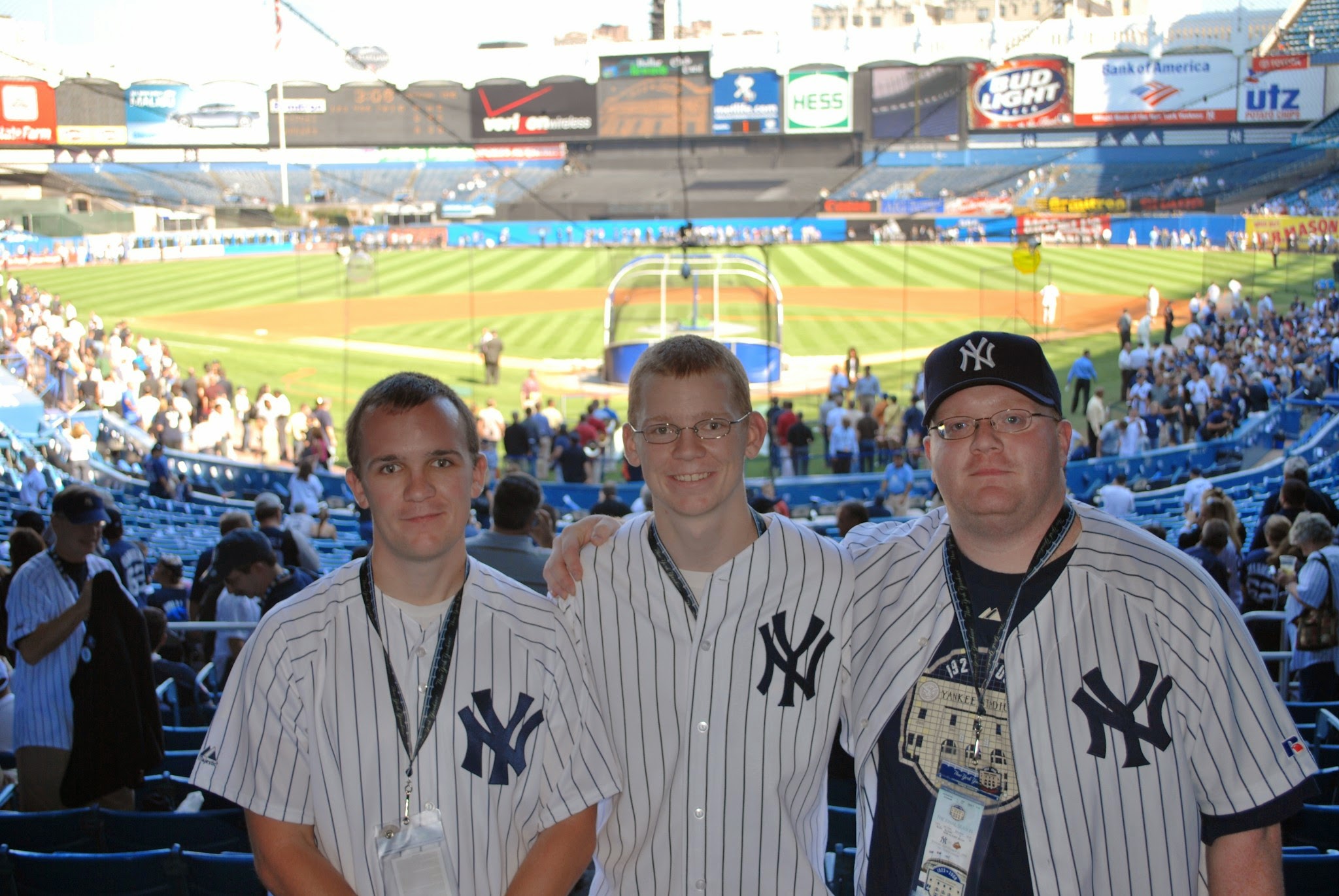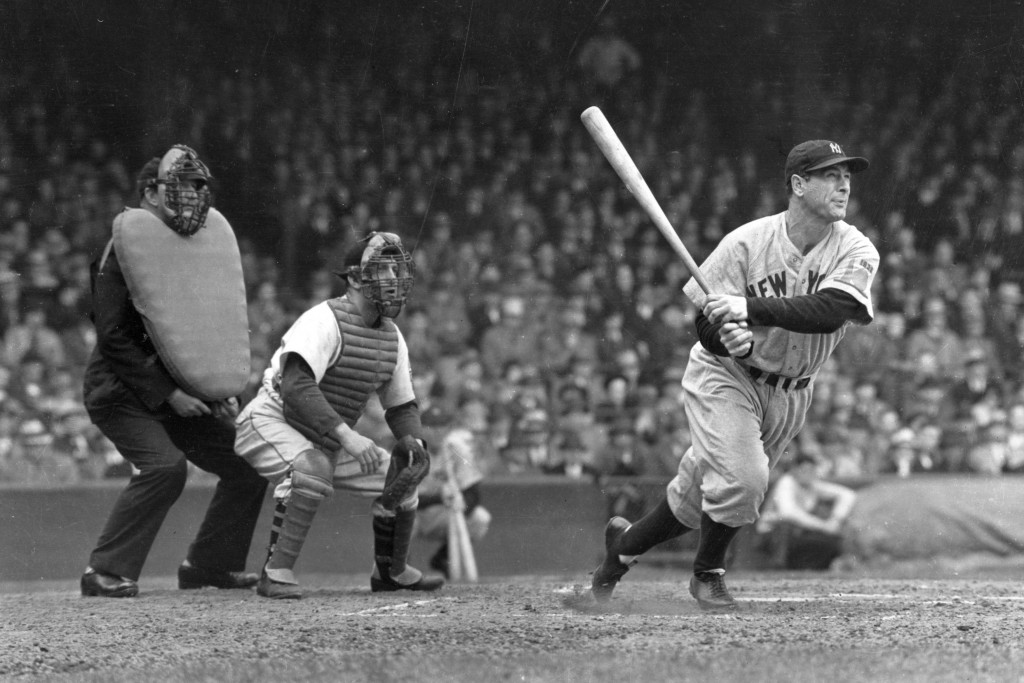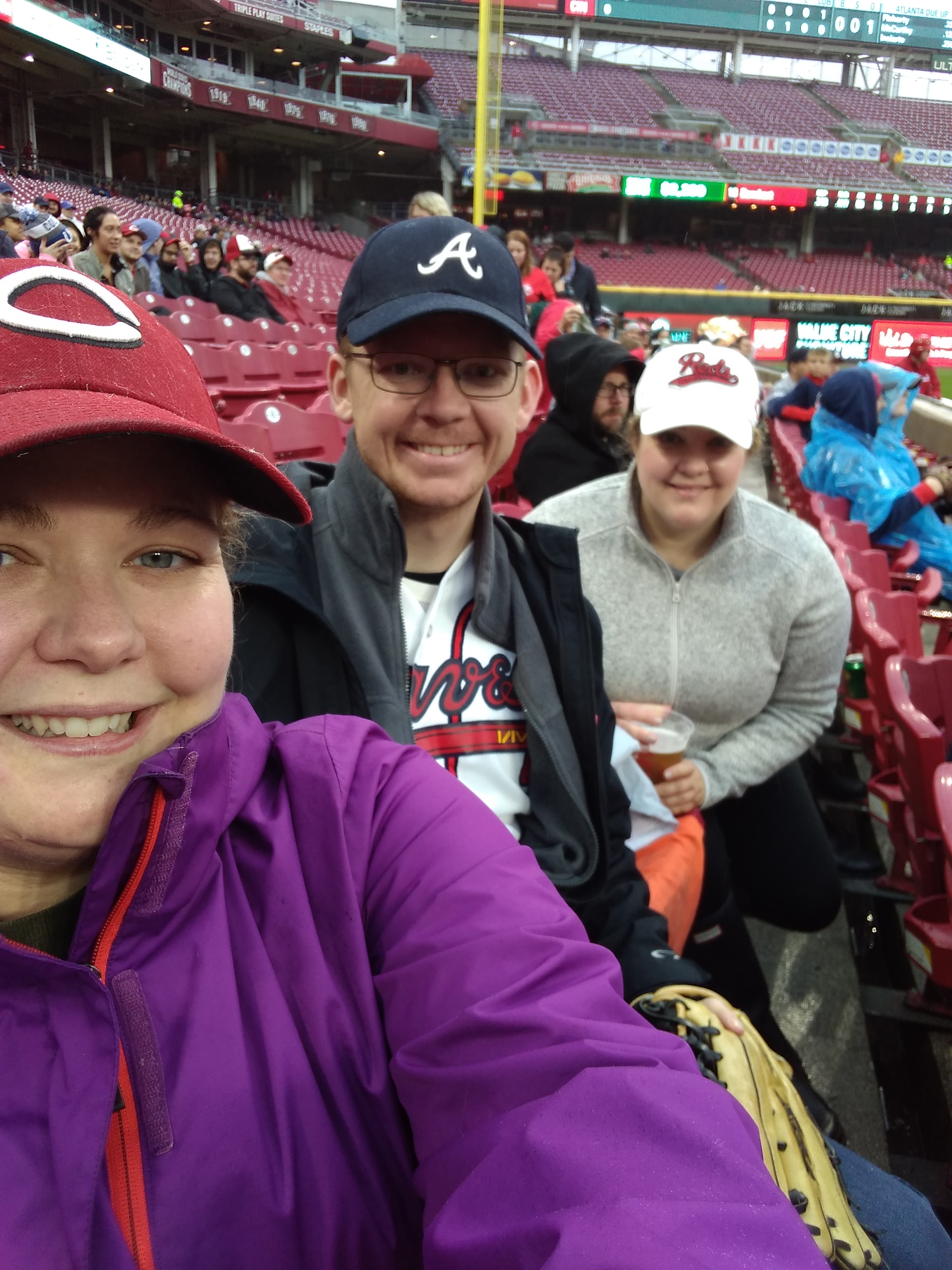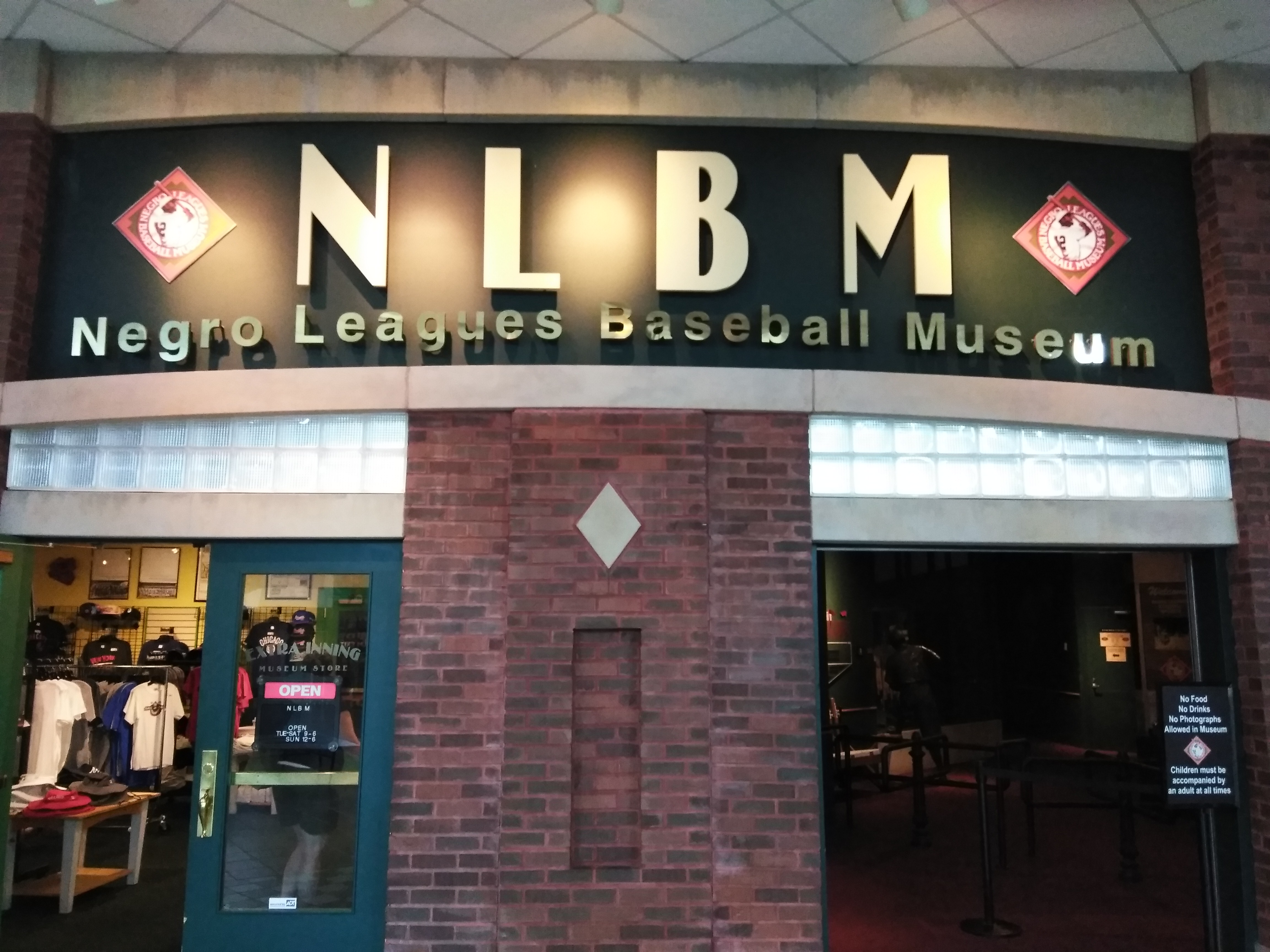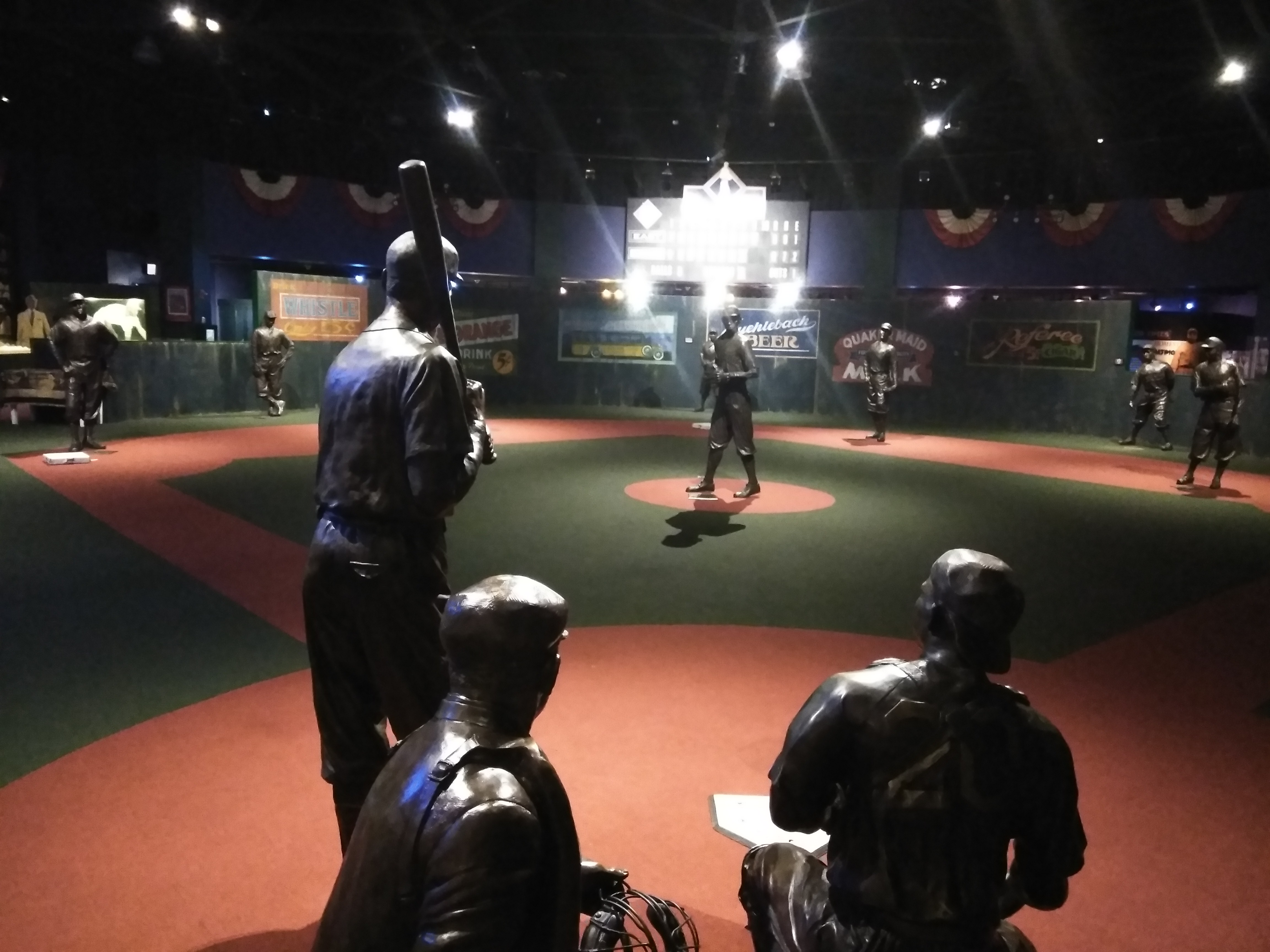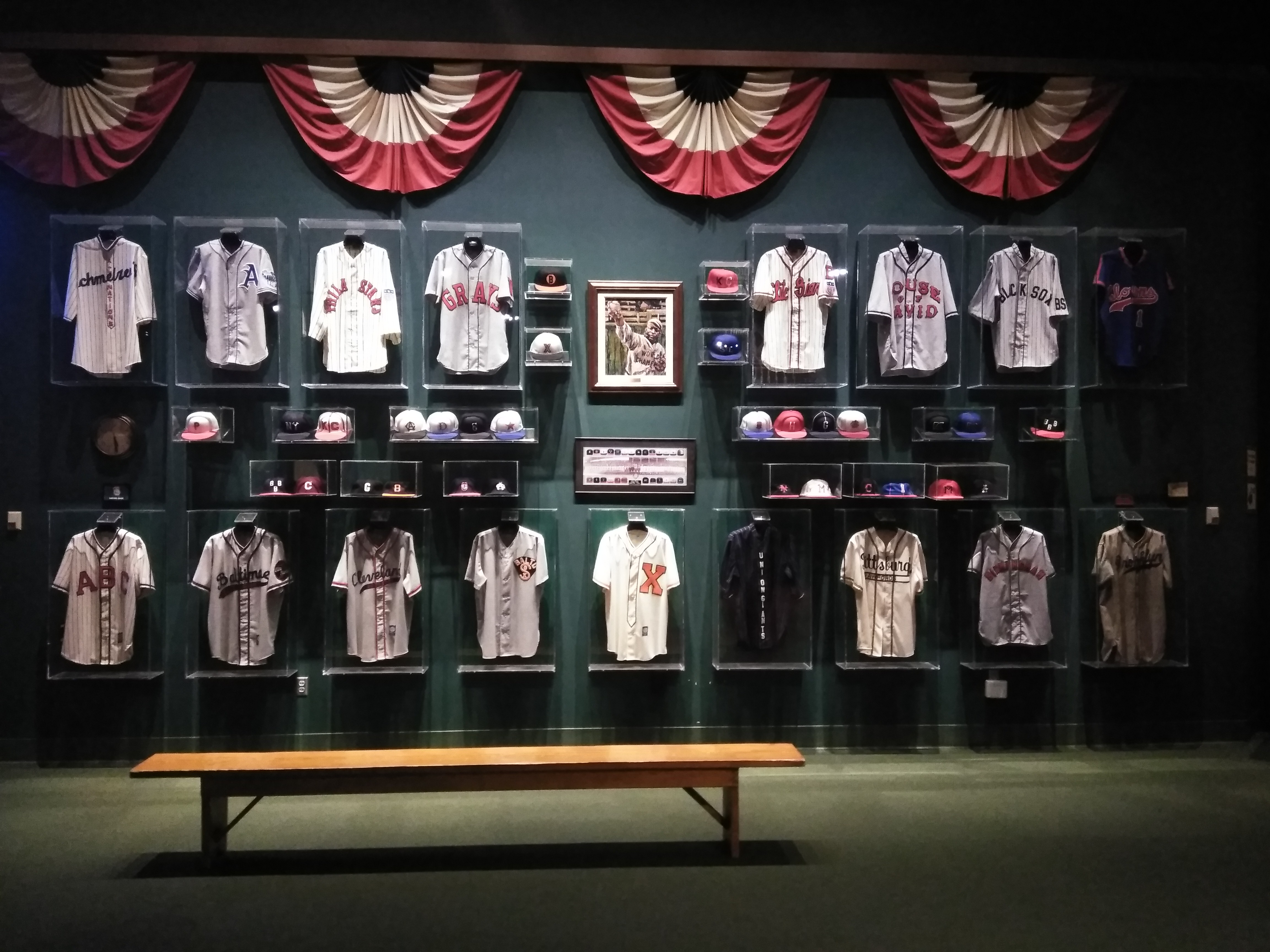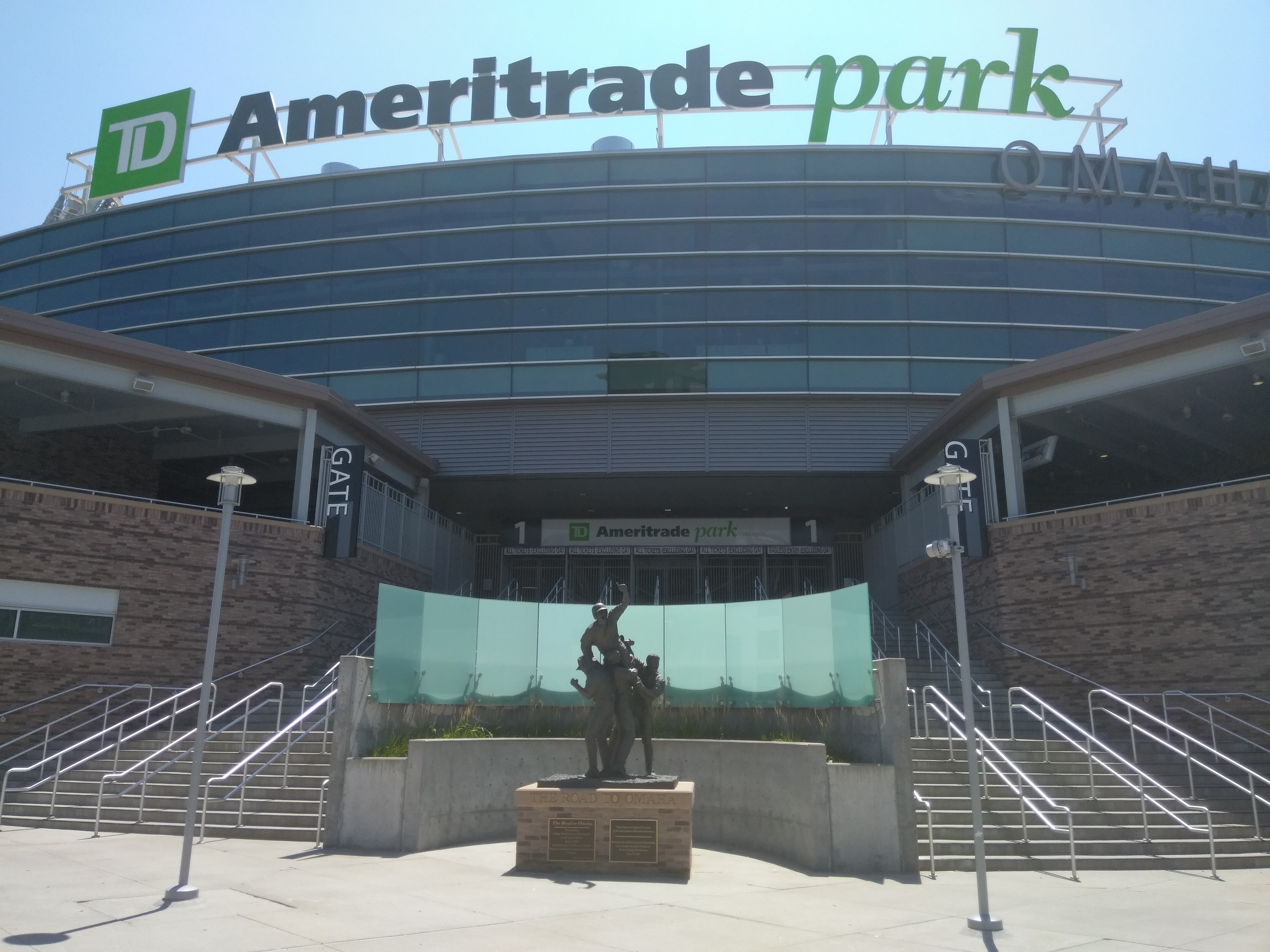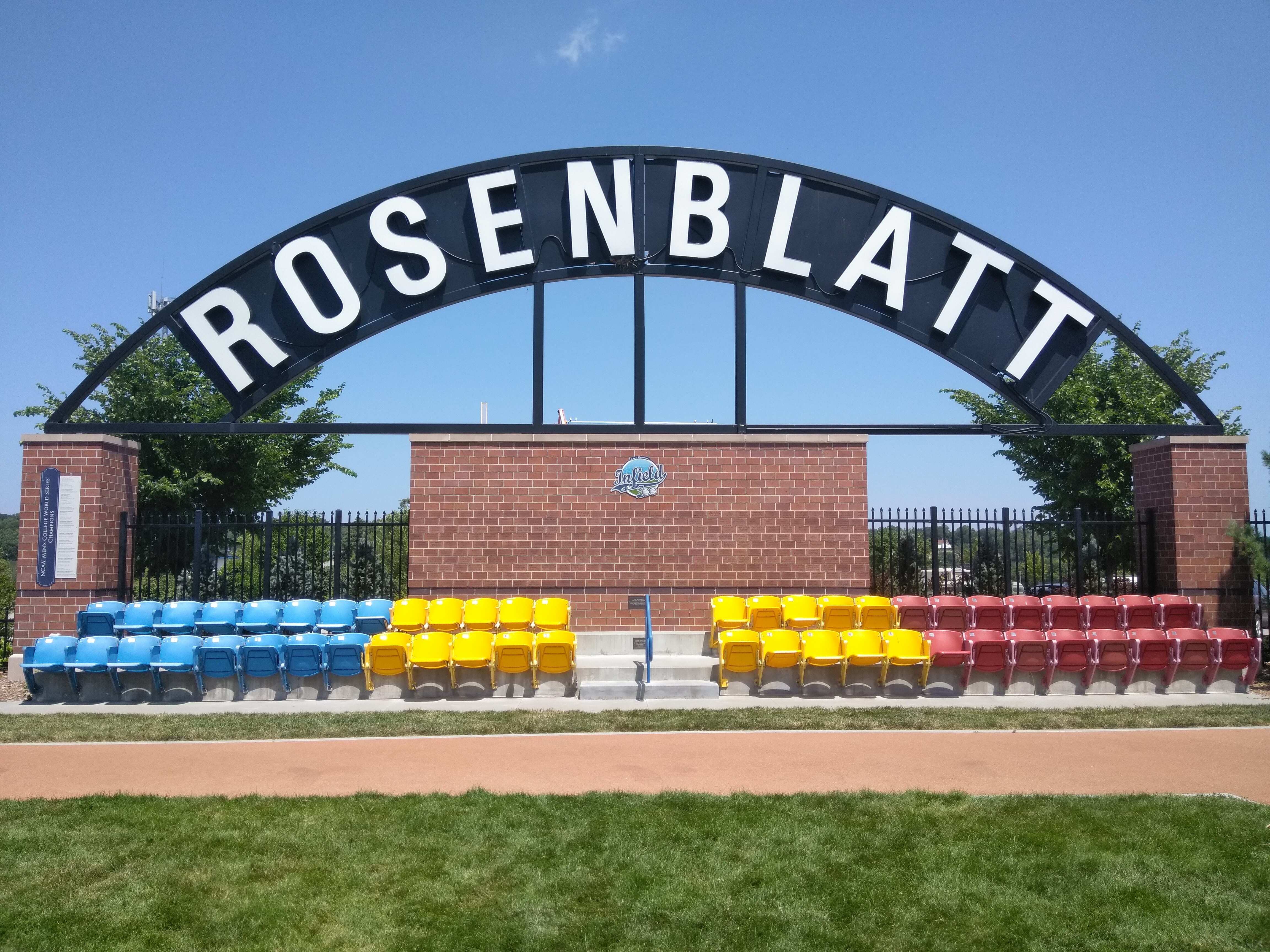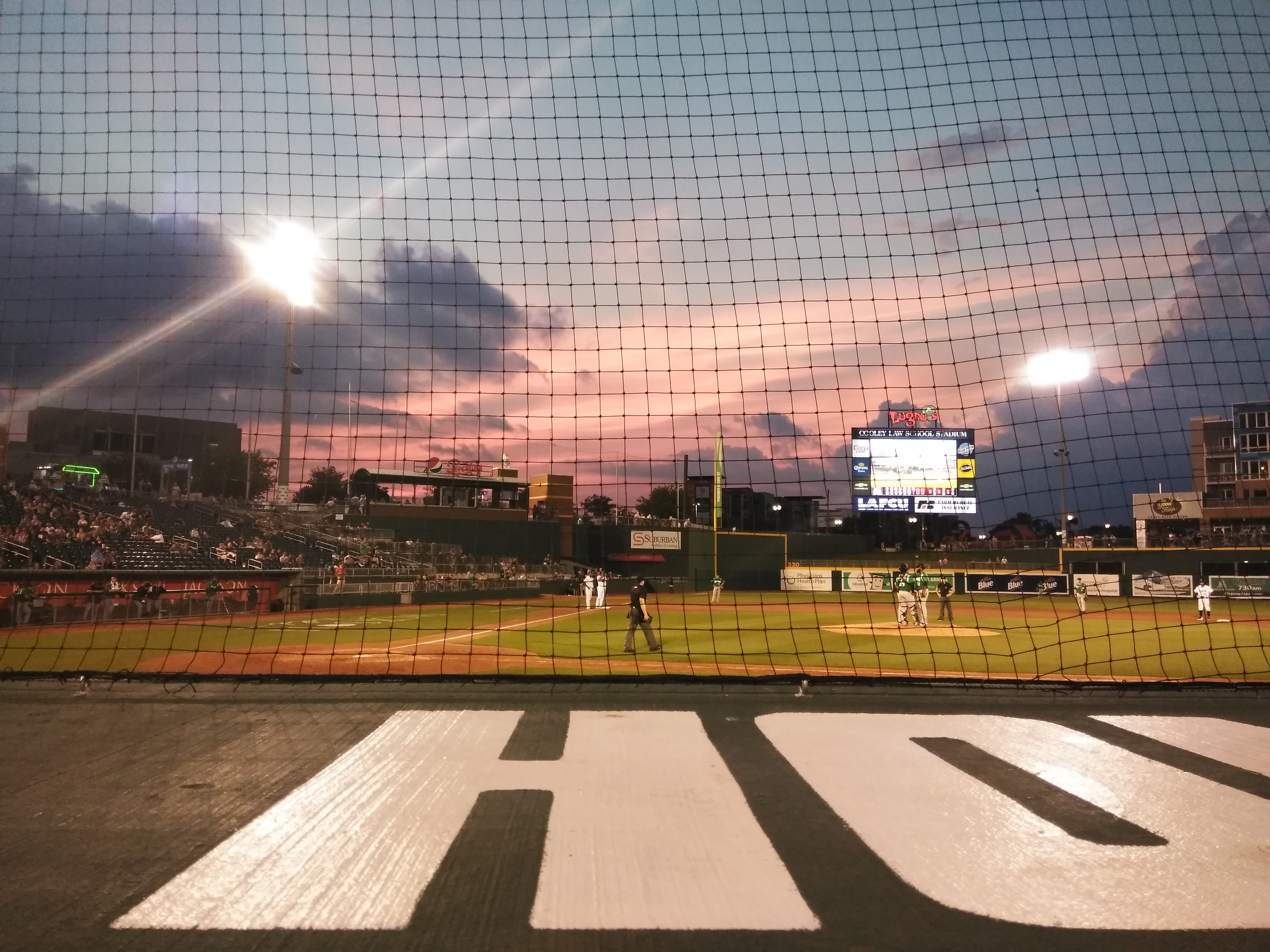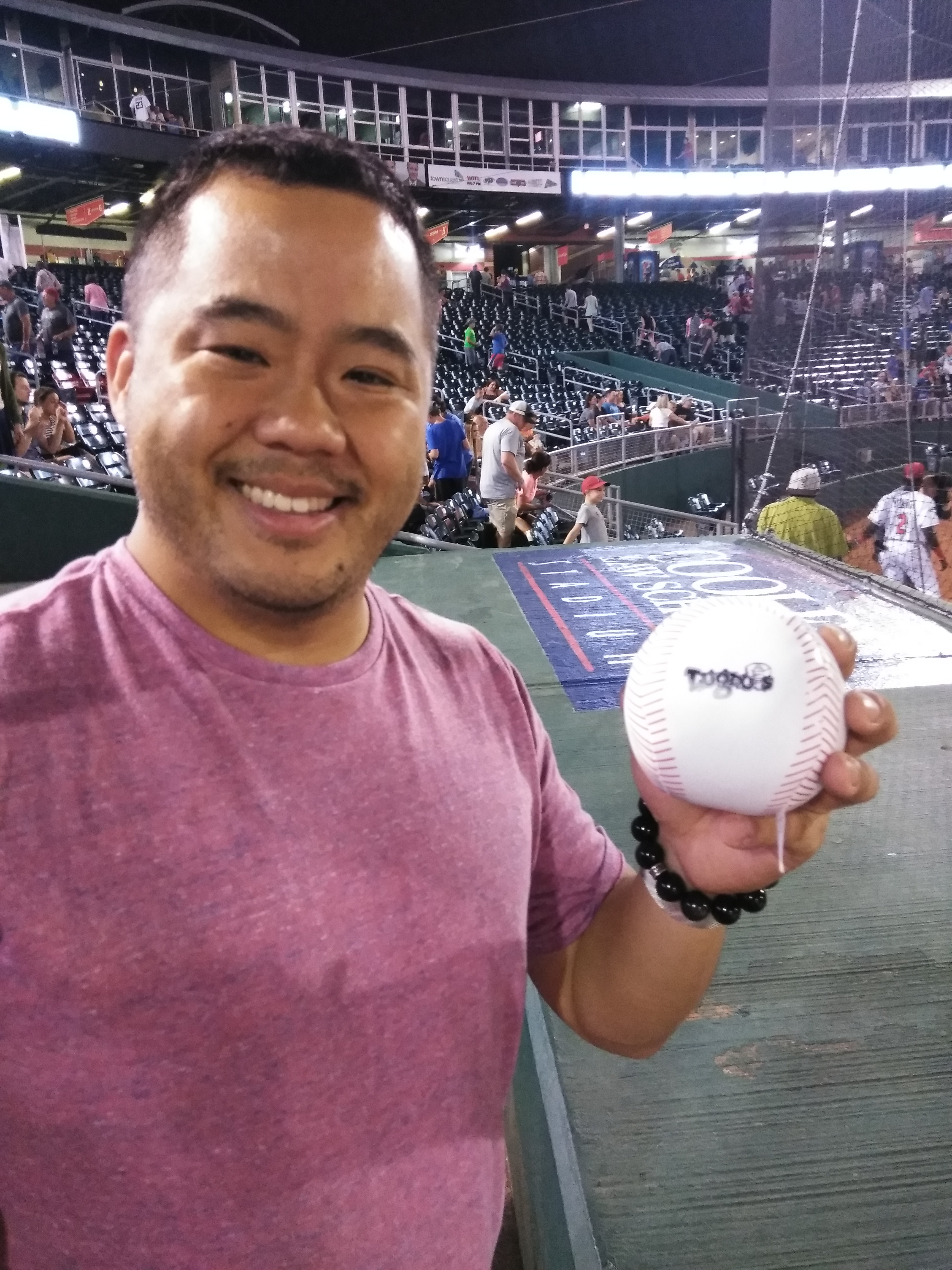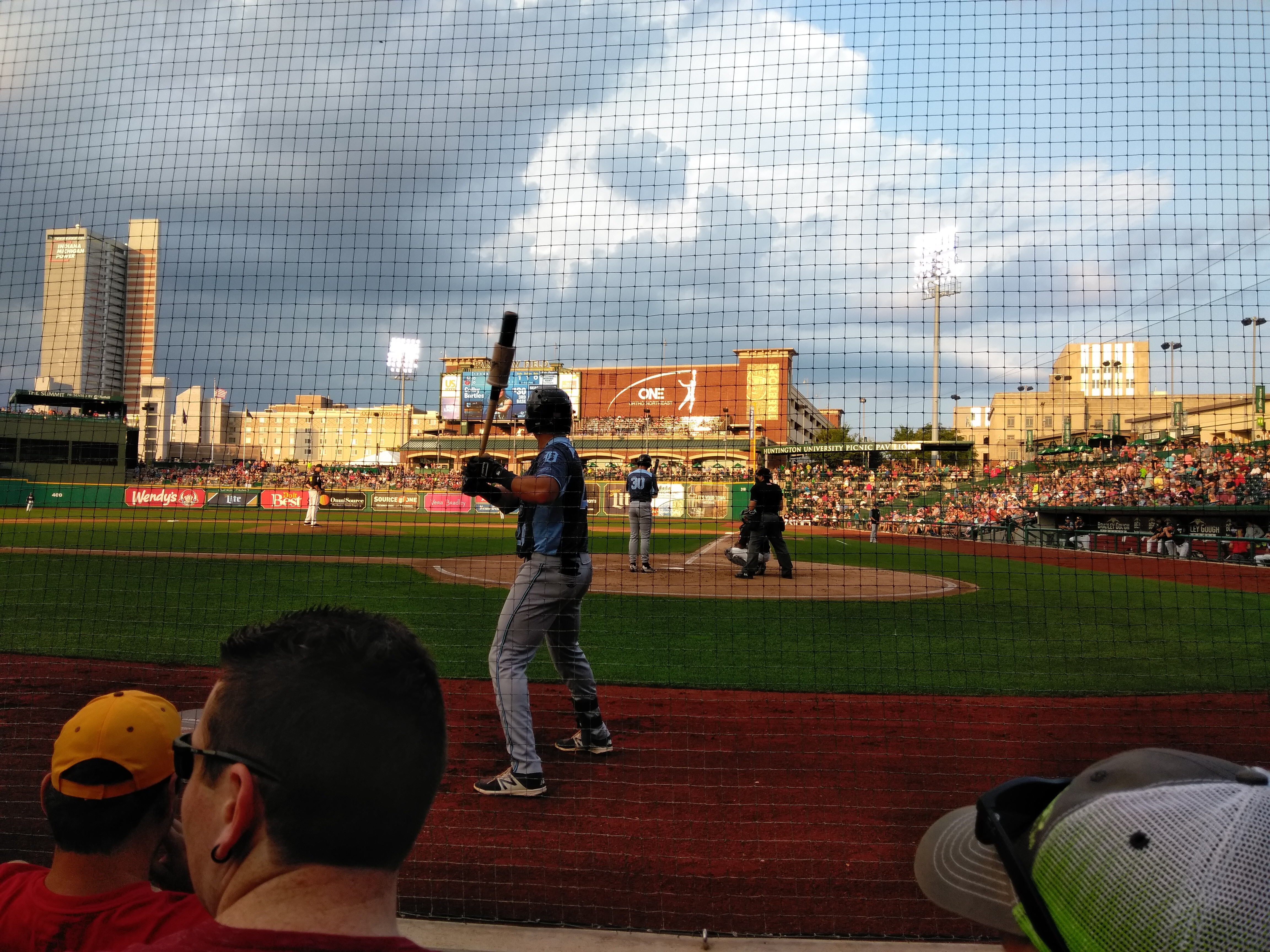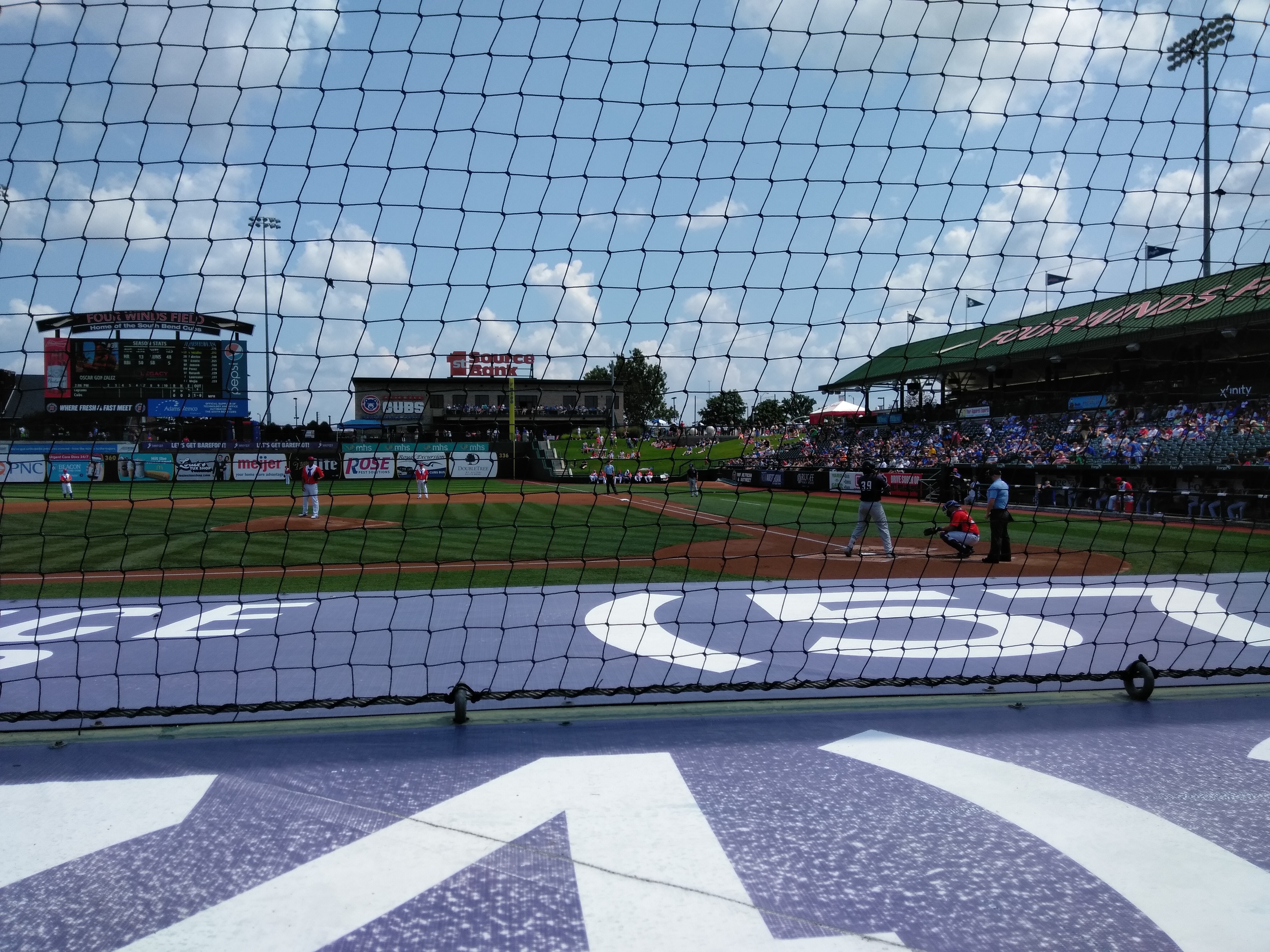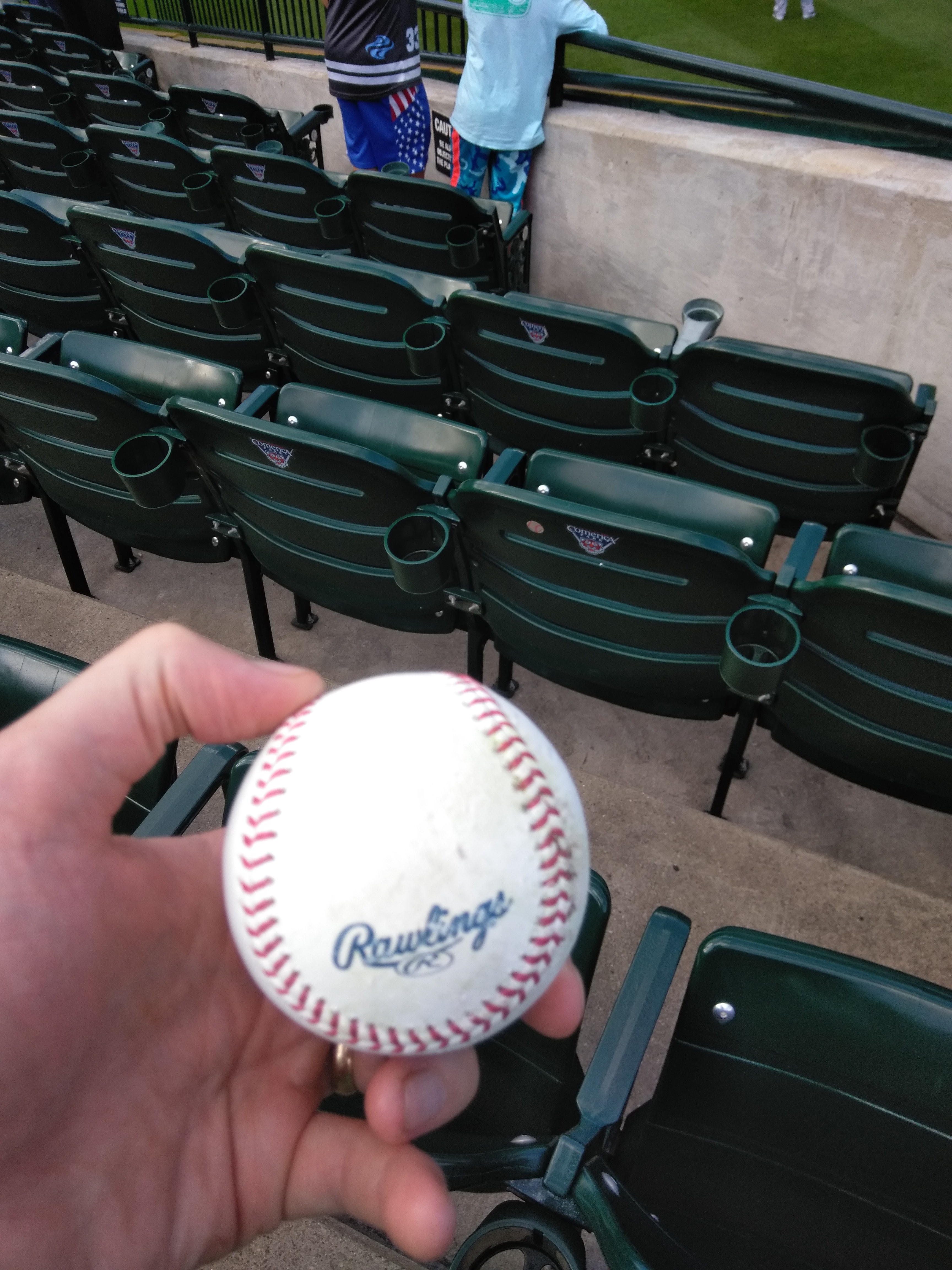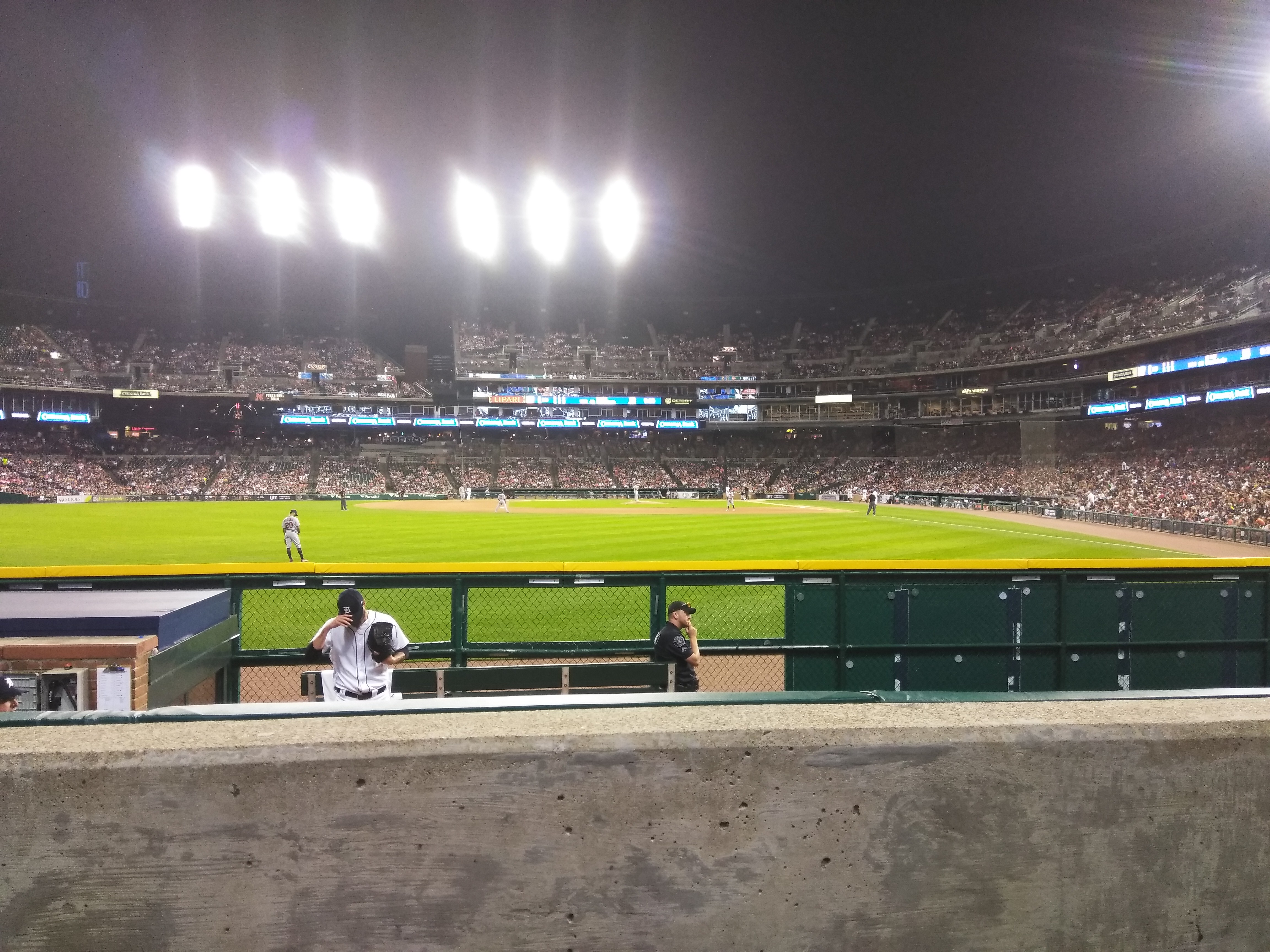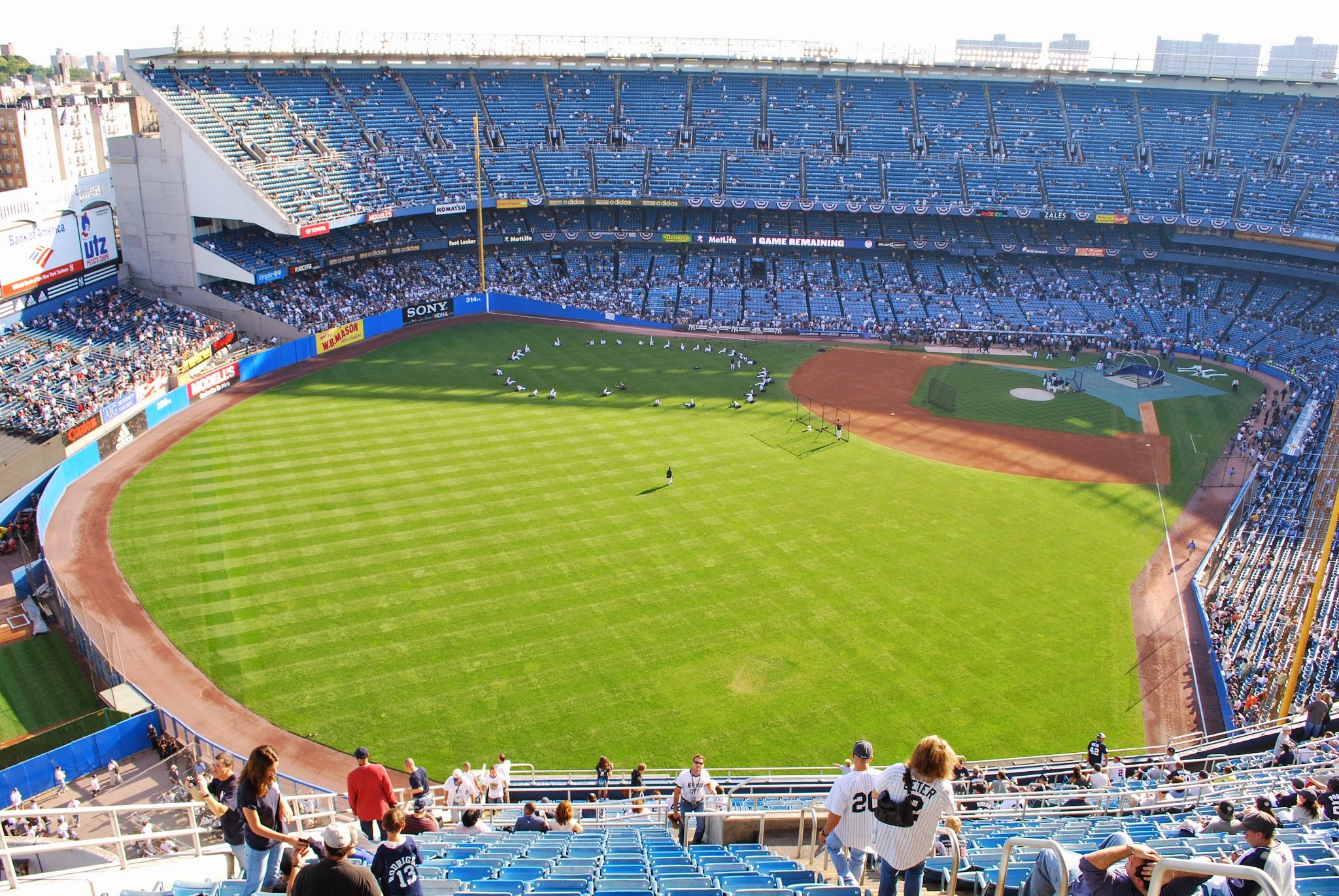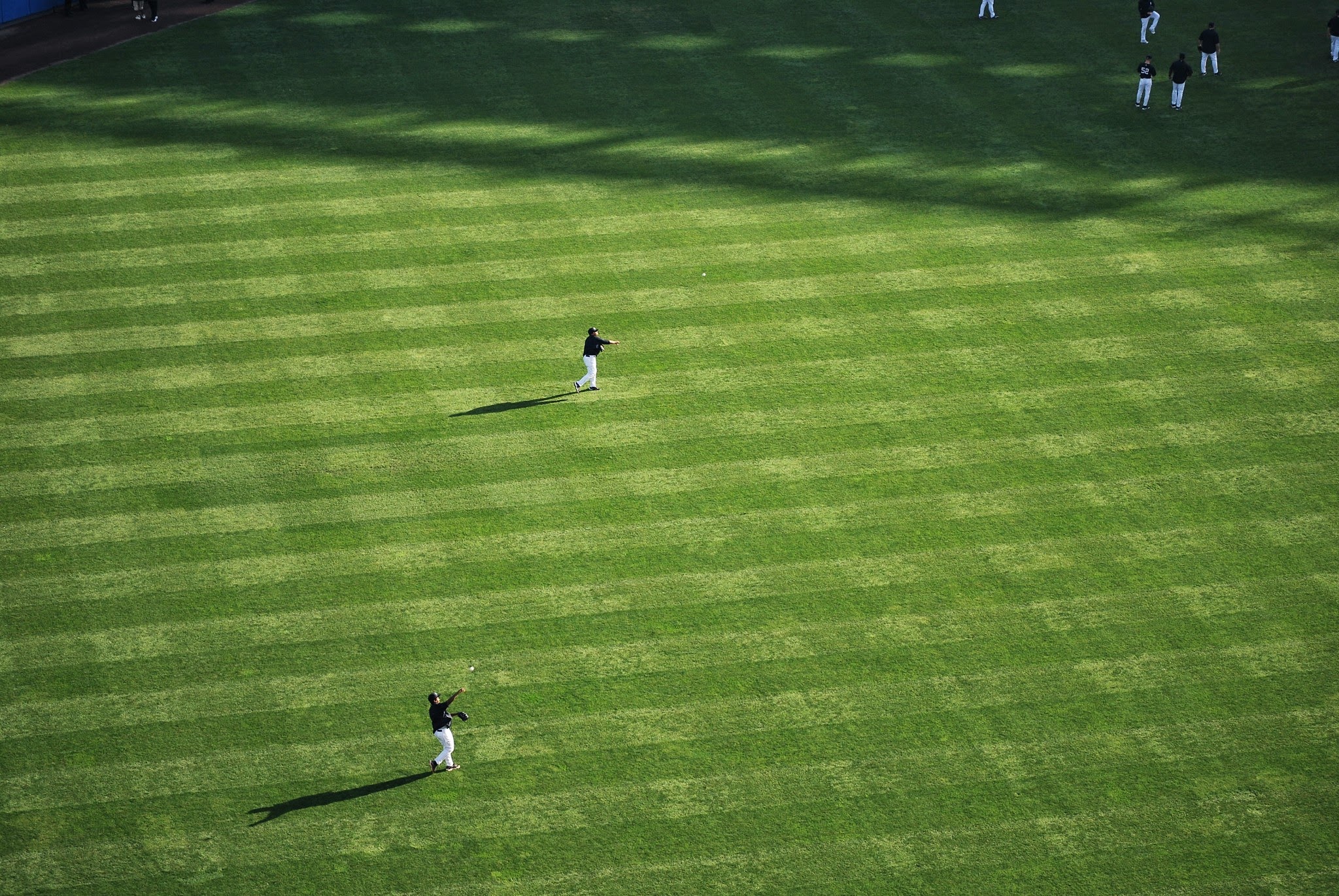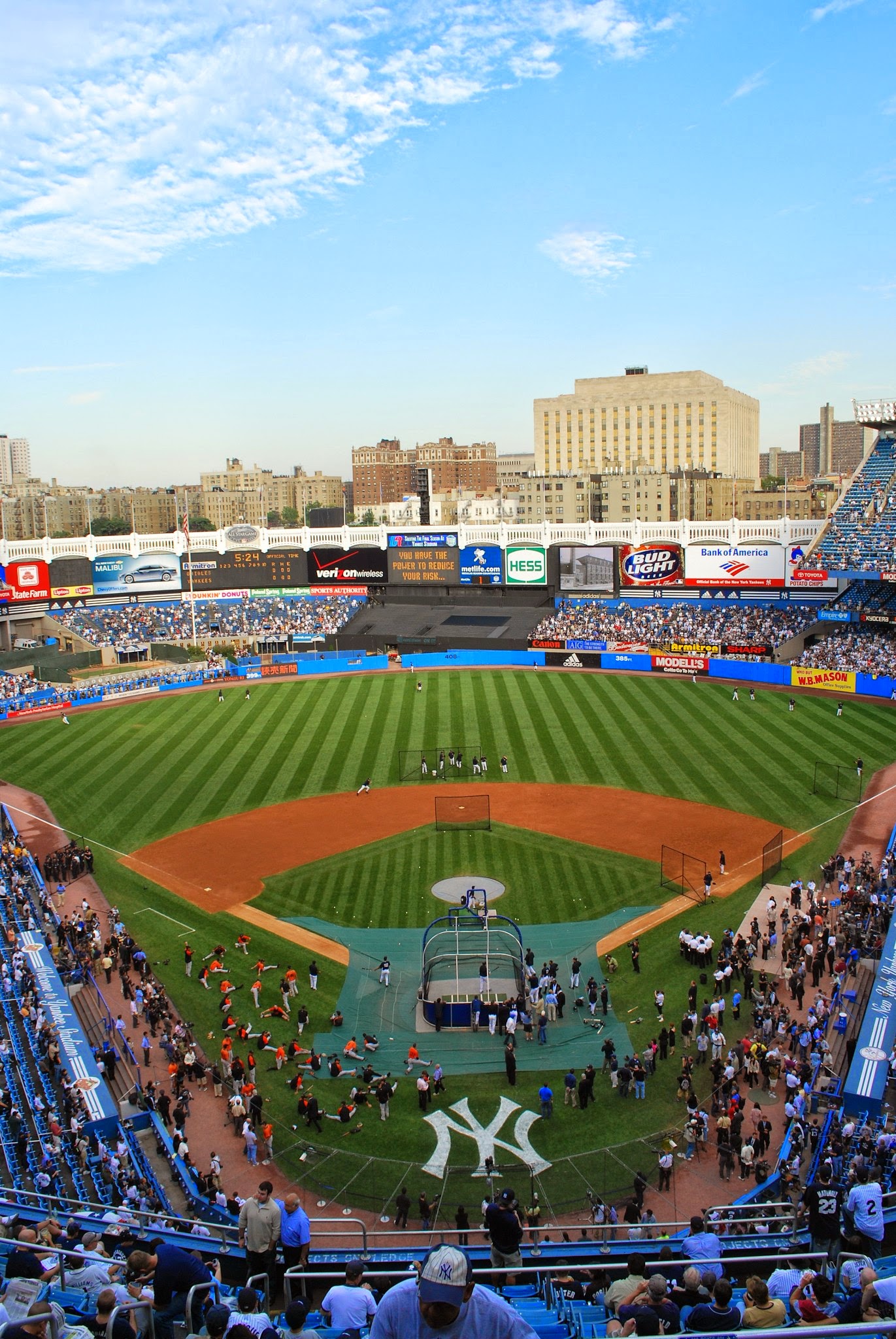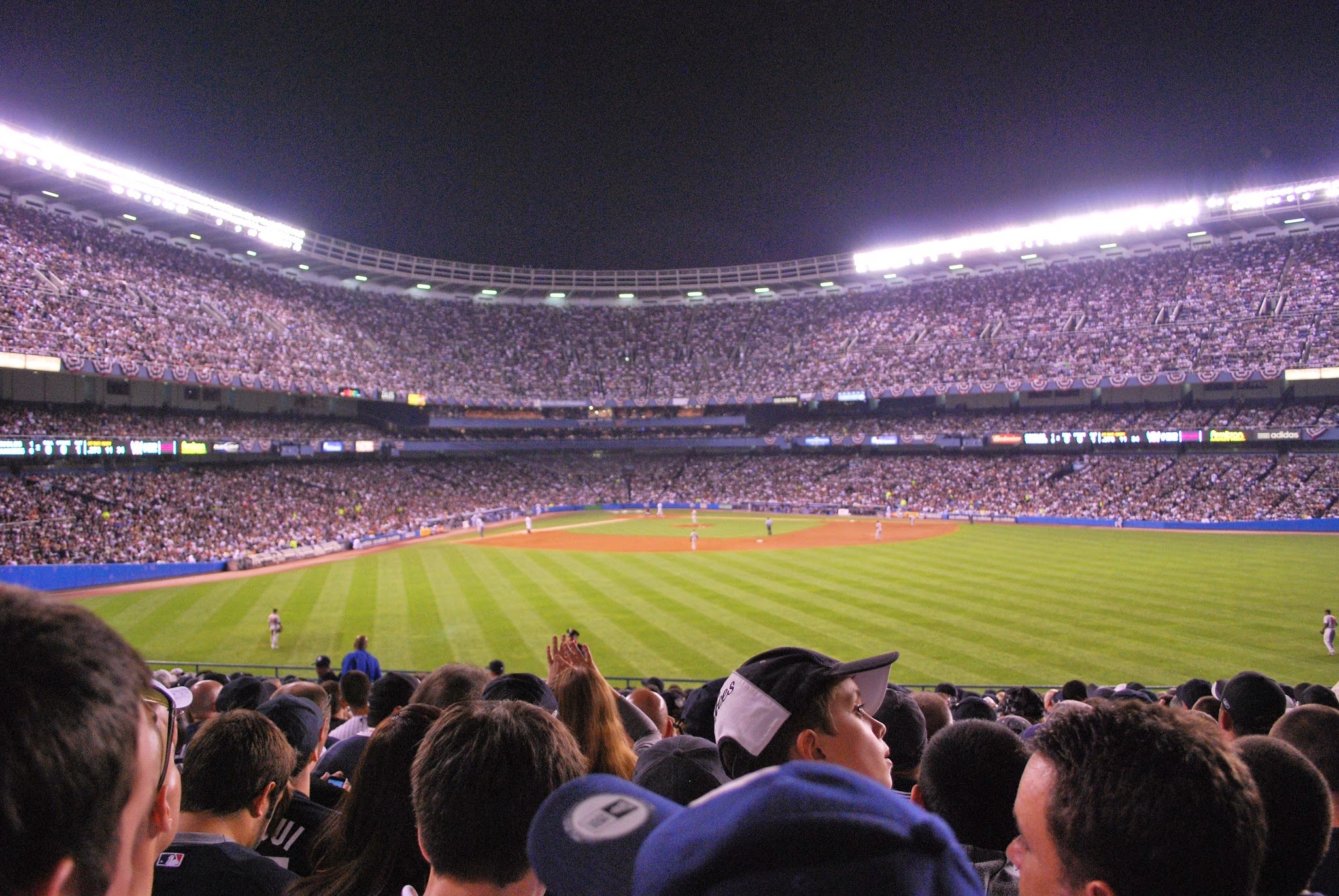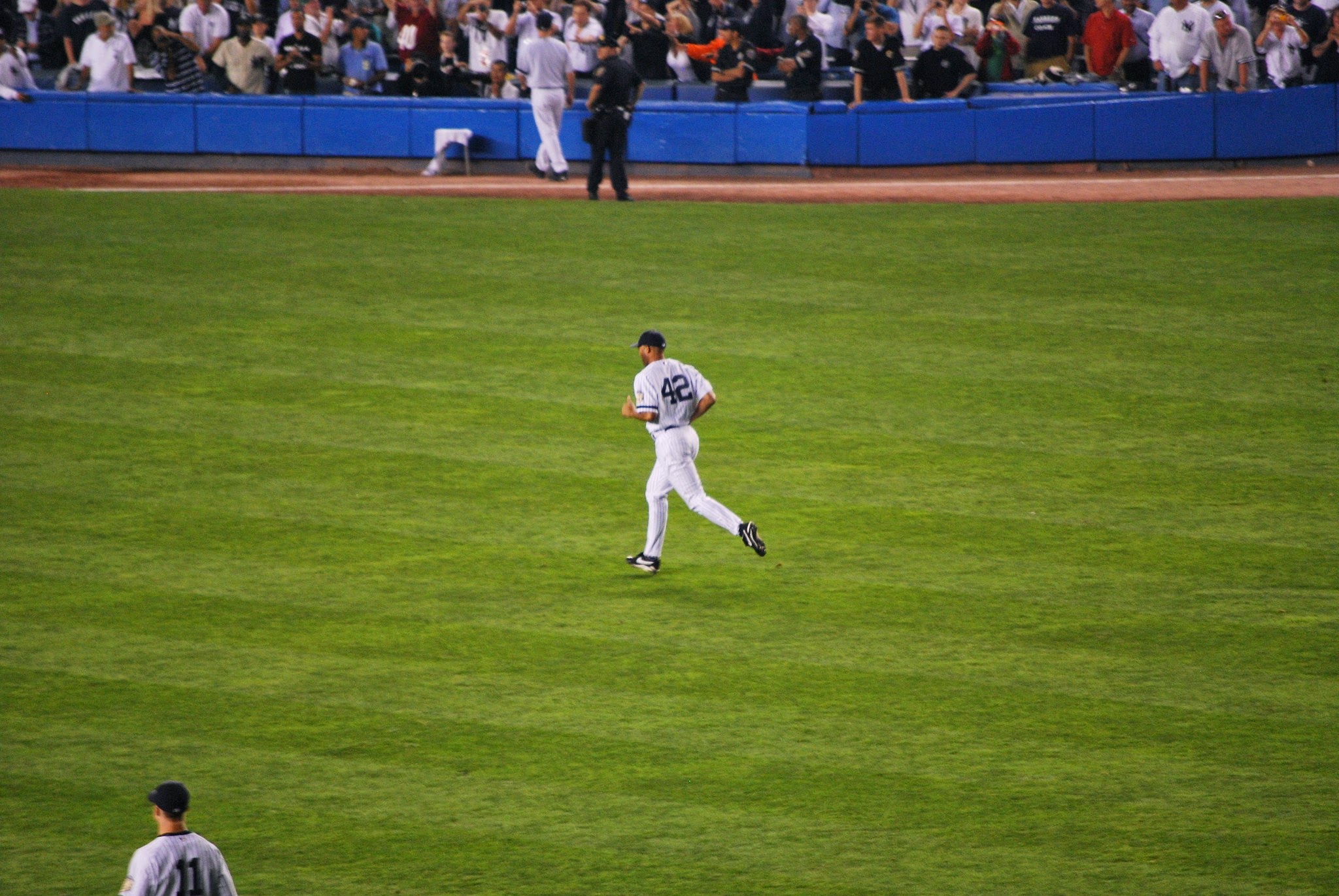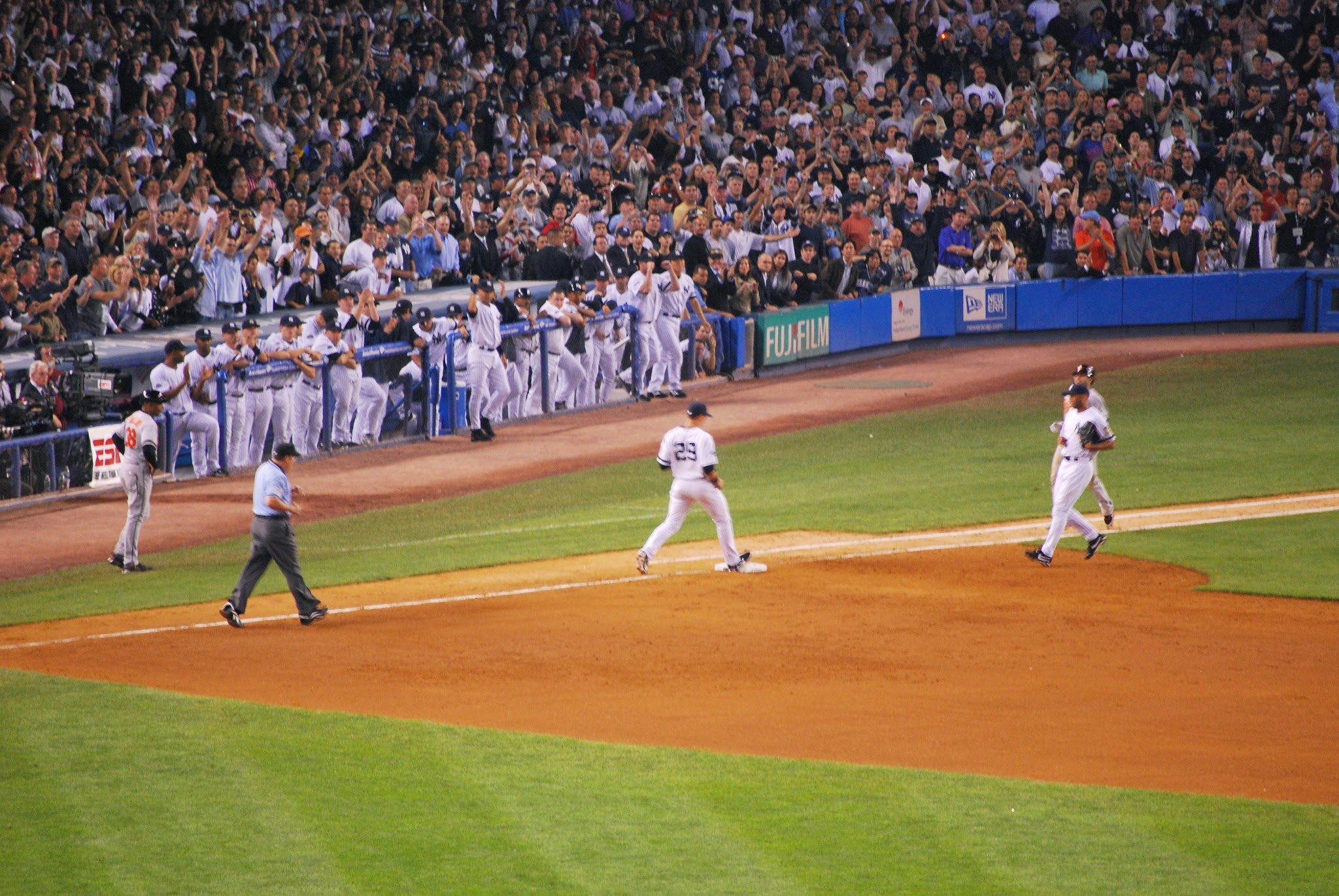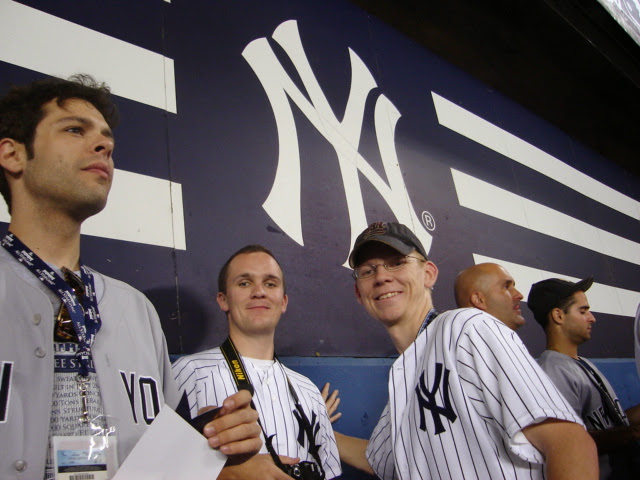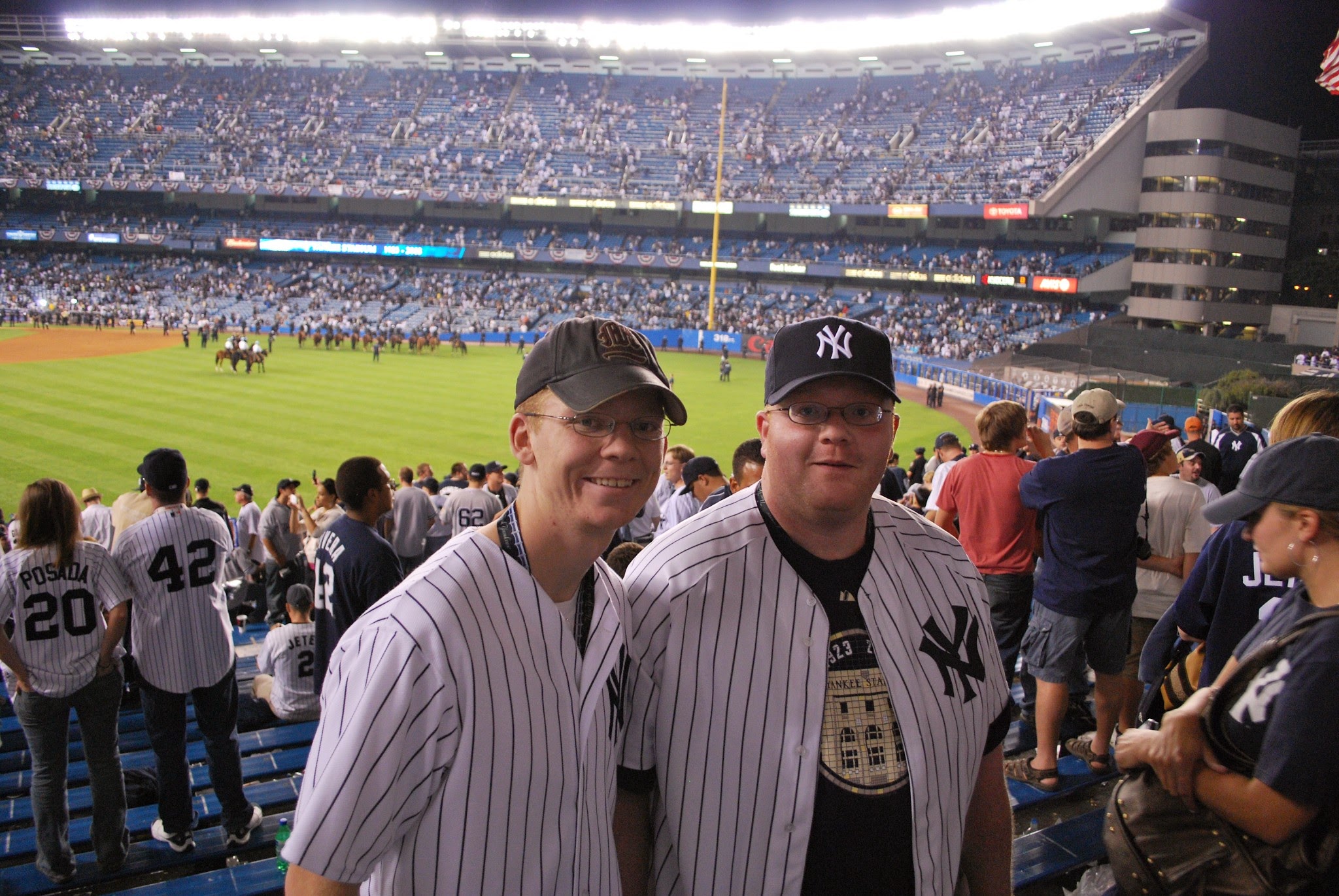Tagged: Yankee Stadium
United States of Baseball- Utah
Utah is pushing to someday have a Major League team. While they wait, the Beehive State continues to grow its baseball tradition. The United States of Baseball is important for baseball powerhouses like California and Florida, and for less prodigious baseball states like Utah and its 43 Major League players. The greatest pitcher born in Utah is Bruce Hurst. His 34.52 career WAR is the 42nd highest among state and territory pitching leaders. The greatest position player born in the Beehive State is Duke Sims. His 12.78 career WAR is the 51st highest among state and territory position player leaders. Utah has a combined 47.30 WAR, ranking the Beehive State 50th among all states and territories.
There is always a first. The first player ever drafted from Utah was Bruce Hurst. The St. George native was selected by the Boston Red Sox in the 1st Round, 22nd overall, of the 1976 MLB Draft. The crafty Lefty pitched 15 seasons with 4 teams: Boston Red Sox (1980-1988), San Diego Padres (1989-1993), Colorado Rockies (1993), and Texas Rangers (1994). Hurst pitched in 379 career Games, made 359 Starts, 5 Games Finished, with 83 Complete Games, 23 Shutouts, 2,417.1 Innings Pitched, allowed 2,463 Hits, 1,143 Runs, 1,052 Earned Runs, 740 Walks, 1,689 Strikeouts, posted a 145-113 record, with a 3.92 ERA, 1.325 WHIP, and 104 ERA+. He has the second most Wins at Fenway Park with 57, behind only Mel Parnell’s 71. Hurst was the third pitcher to record 1,000 career Strikeouts with the Red Sox. He was inducted into the Red Sox Hall of Fame in 2004. He left Boston in Free Agency after the 1988 season after the Front Office played hardball and told him to test the open market. This was during the Owner’s Collusion to stamp out free agency. Ultimately Hurst signed with the Padres. His 1987 All Star selection remains Utah’s only trip to the Mid-Summer Classic. He is also the Beehive State leader in Wins, Losses, Games Started, Complete Games, Shutouts, Innings Pitched, Hits, Runs, Earned Runs, Home Runs, Walks, and Strikeouts. After retiring he served as a coach and scout internationally for Major League Baseball in Italy and Latin America, and as the Pitching Coach for the Chinese National Baseball team in 2005-2006 and 2012-2013.
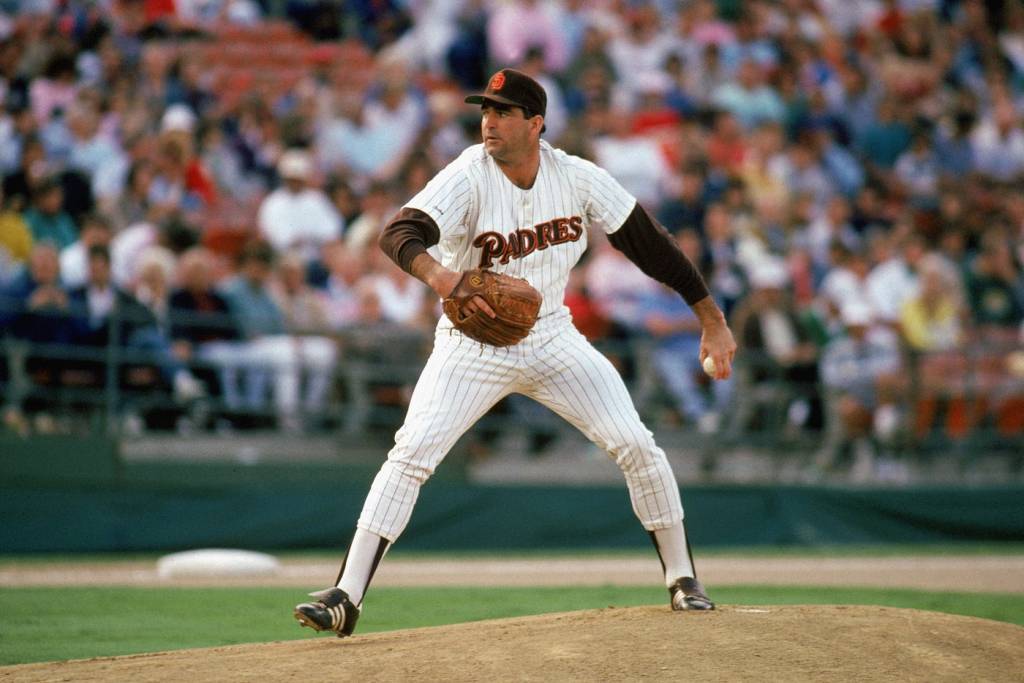
The best season of Hurst’s career came with the 1989 Padres. He pitched in 33 Games, made 33 Starts, threw 10 Complete Games, including 2 Shutouts, in 244.2 Innings Pitched, allowed 214 Hits, 84 Runs, 73 Earned Runs, 66 Walks, 179 Strikeouts, posted a 15-11 record, with a 2.69 ERA, 1.144 WHIP, and 131 ERA+. Hurst led the National League in Complete Games. He also set career bests in Games Started, Innings Pitched, and ERA. The Padres finished just 3 Games Behind the San Francisco Giants for the National League West Division title.
Hurst pitched in three Postseason series: 1986 and 1988 American League Championship Series and 1986 World Series. He pitched in 7 Postseason Games, made 7 Starts, threw 3 Complete Games, in 51 Innings Pitched, allowed 46 Hits, 14 Runs, 13 Earned Runs, 12 Walks, 37 Strikeouts, posted a 3-2 record, with a 2.29 ERA, and 1.137 WHIP. Hurst nearly pitched the Red Sox to a World Series title against the Mets. He Started Games 1, 5, and 7. He threw 8 Shutout Innings in the Red Sox Game 1 victory. He pitched a Complete Game victory in Game 5. In Game 7, Hurst pitched 6 Innings and allowed 3 Earned Runs. When he left the game the score was tied 3-3, before the Mets pulled away for an 8-5 victory. Boston needed to win one of the final two games, but The Curse of the Bambino was stronger than Hurst’s Left Arm.
Duane “Duke” Sims made a career as a solid backstop. The Salt Lake City native played 11 seasons with 5 teams: Cleveland Indians (1964-1970), Los Angeles Dodgers (1971-1972), Detroit Tigers (1972-1973), New York Yankees (1973-1974), and Texas Rangers (1974). Sims played in 843 career Games, scored 263 Runs, collected 580 Hits, 80 Doubles, 6 Triples, 100 Home Runs, 310 RBI, 6 Stolen Bases, drawing 338 Walks, 483 Strikeouts, posting a .239 BA, .340 OBP, .401 SLG, .741 OPS, 112 OPS+, and 972 Total Bases. His most famous Home Run came on September 30, 1973 off of Fred Holdsworth. Sims hit the final Home Run at Yankee Stadium before the House That Ruth Built closed for two seasons for extensive renovations. Sims is Utah’s all-time leader in career Games Played, Plate Appearances, At Bats, Runs scored, Hits, Double, Home Runs, RBI, Walks, and Strikeouts. Career success is measured in many ways.
The best season of Sims’ career came with the 1970 Cleveland Indians. He played in 110 Games, scored 46 Runs, collected 91 Hits, including 12 Doubles, 23 Home Runs, 56 RBI, drew 46 Walks, 59 Strikeouts, .264 BA, .360 OBP, .499 SLG, .859 OPS, 131 OPS+, and 172 Total Bases. Sims set career best in Hits, Home Runs, RBI, SLG, OPS, and Total Bases. That Winter, Cleveland traded him to the Los Angeles Dodgers for Alan Foster and Ray Lamb.
Sims played in one Postseason series, the 1972 American League Championship Series with the Detroit Tigers. The Tigers lost in five games. Sims played in 4 Games, collected 3 Hits, 2 Doubles, 1 Triple, drew 1 Walk, 2 Strikeouts, with a .214 BA, .267 OBP, .500 SLG, .767 OPS, and 7 Total Bases. October can be a mystery for some teams.
No Utah native has been elected to the Hall of Fame. Bruce Hurst appeared on the 2000 Hall of Fame ballot and received one vote (0.2%). Duke Sims appeared on the Hall of Fame ballot in 1980, but received no votes. As the state produces more Major League quality players, Cooperstown should eventually get its first member from the Beehive State. Next the United States of Baseball returns to New England and The Green Mountain State. Vermont is next.
DJ
United States of Baseball- Tennessee
It seems inevitable that Major League Baseball will expand to 32 teams. When it does, Nashville has a good chance of landing one of the new teams. Tennessee’s baseball history runs deep and the addition of a MLB team would further that legacy. The Volunteer State has sent 405 players to the Major Leagues. The greatest pitcher born in Tennessee is Tommy Bridges. His 51.62 career WAR is the 27th highest among state and territory pitching leaders. The greatest position player from the Volunteer State is Todd Helton. His 61.78 career WAR is the 32nd highest among state and territory position player leaders. Combined Tennessee has 113.40 WAR, ranking the Volunteer State 32nd in the United States of Baseball.
Tommy Bridges was born in Gordonsville and found baseball success in Detroit. The Right Hander attended the University of Tennessee, but left to pursue baseball. He played 16 seasons with the Detroit Tigers (1930-1943, 1945-1946). Despite a small build, Bridges gave opposing batters stomach ulcers with his curveball and fastball combination. Making his Major League debut on August 13, 1930 at Yankee Stadium, Bridges was immediately put to the test. The first batter he faced was Babe Ruth, who popped out to Third. Next, Tony Lazzeri Singled. Bridges then struck out Lou Gehrig. Finally, Harry Rice grounded out to Second. The first three batters of his career were Hall of Famers, two of which are among the greatest ever. After escaping the Bronx, Bridges pitched in 424 career Games, made 362 Starts, with 47 Games Finished, 200 Complete Games, including 33 Shutouts, in 2,826.1 Innings Pitched, allowed 2,675 Hits, 1,321 Runs, 1,122 Earned Runs, 181 Home Runs, 1,192 Walks, 1,674 Strikeouts, posted a 194-138 record, 3.57 ERA, 1.368 WHIP, and 126 ERA+. He was a six time All Star.
Bridges fell one out short of a Perfect Game on August 5, 1932. The Tigers were dismantling the Washington Senators at Navin Field in Detroit. Leading 13 to 0 with two outs in the 9th Inning, Senators Manager Walter Johnson sent Dave Harris to Pinch Hit for Pitcher Bobby Burke. Harris Singled to break up the Perfecto. Bridges composed himself and induced a groundout from Sam Rice. He narrowly missed pitching the sixth Perfect Game in MLB history. It took nearly a quarter century until Don Larsen threw the next Perfect Game in the 1956 World Series.
Despite his success, Bridges’ number would have been better had he not spent the 1944 season in the Army during World War II. In 1949, he declined an offer from the Yankees choosing to continue pitching for the Minor League Portland Beavers.

The best season of Bridges’ career was 1936. He pitched in 39 Games for the Tigers, made 38 Starts, with 1 Game Finished, 26 Complete Games, including 5 Shutouts, in 294.2 Innings Pitched, allowed 289 Hits, 141 Runs, 118 Earned Runs, 21 Home Runs, 115 Walks, 175 Strikeouts, posted a 23-11 record, with a 3.60 ERA, 1.371 WHIP, and 137 ERA+. Bridges led the Junior Circuit in Starts, Wins, and Strikeouts. He set career bests in Games Pitched, Starts, Complete Games, Shutouts, Innings Pitched, Hits allowed, Runs, Earned Runs, Strikeouts, and Wins. He was an All Star and finished ninth in the American League MVP voting.
Detroit was excellent throughout Bridges’ career. The Tigers appeared in the Fall Classic four times: 1934, 1935, 1940, and 1945. They won twice, in 1935 and 1945. In the World Series, Bridges pitched in 7 Games, made 5 Starts, threw 4 Complete Games, in 46.0 Innings Pitched, allowed 52 Hits, 22 Runs, 18 Earned Runs, 2 Home Runs, 9 Walks, 27 Strikeouts, posted a 4-1 record, with a 3.52 ERA, and 1.326 WHIP. Bridges’ success in the Regular Season carried into October. He appeared on the Hall of Fame ballot for seven years, peaking with 7.5% in 1964.
Todd Helton has lived every kid’s dream. The Knoxville native was drafted in the 2nd Round of the 1992 MLB Draft by the Padres, but chose to accept a football scholarship from the University of Tennessee and walked on the baseball team. Helton played 12 games for the Volunteers at Quarterback before an injury allowed Peyton Manning to replace him. Helton turned his attention to the diamond. He played Firstbase and was the Closer. He won the 1995 Dick Howser Trophy as the National Collegiate Baseball Player of the Year. The same year, the Rockies selected Helton with the 8th overall pick in the MLB Draft.
After spending just two seasons in the Minor Leagues, Helton was called up. He spent his entire 17 season career with the Colorado Rockies (1997- 2013). He played in 2,247 career Games, scored 1,401 Runs, collected 2,519 Hits, including 592 Doubles, 37 Triples, 369 Home Runs, 1,406 RBI, 37 Stolen Bases, drew 1,335 Walks, 1,175 Strikeouts, with a .316 BA, .414 OBP, .539 SLG, .953 OPS, and 133 OPS+. Helton was a five time All Star, won three Gold Gloves, four Silver Sluggers, and the 2000 National League Batting Title. He finished second behind Kerry Wood for the 1998 National League Rookie of the Year Award. Helton is the first player to collect 100 extra base hits in back to back seasons, 2000 and 2001. He is also the first player to hit 35 Doubles in 10 consecutive seasons. He was inducted into the Arizona Fall League Hall of Fame in 2003 and the University of Tennessee Hall of Fame in 2017. Helton is Colorado’s all time Home Run leader. He was the first Rockie to have his number retired, when Colorado retired his #17 in 2014. Helton has appeared on the Hall of Fame ballot for five years. In 2023, he received 72.2% of the vote, falling just 11 votes short of induction. Helton appears headed to Cooperstown in 2024.
The best season of Helton’s career came in 2000. He played in 160 Games, scored 138 Runs, collected 216 Hits, including 59 Doubles, 2 Triples, 42 Home Runs, 147 RBI, with 5 Stolen Bases, 103 Walks, 61 Strikeouts, .372 BA, .463 OBP, .698 SLG, 1.162 OPS, and 163 OPS+. He led the National League in Hits, Doubles, RBI, Batting Average, On-Base Percentage, Slugging, and OPS. His 59 Doubles were the most in the Senior Circuit since Joe Medwick’s record 64 Doubles in 1936. Helton’s 103 Extra Base Hits were the second highest single season total in National League history, and the fourth highest in MLB history. He set career bests in Games Played, Runs scored, Hits, Doubles, RBI, Batting Average, Slugging, and OPS. Helton flirted with hitting .400 into August. He was an All Star, won the Silver Slugger, the Hank Aaron Award, and finished fifth in the National League MVP voting.
It took 10 seasons before Helton reached the Postseason. They reached the 2007 Postseason after defeating the San Diego Padres in a winner take all play-in tiebreaker to determine the National League Wild Card. The Rockies then swept the Phillies and Diamondbacks to reach their first World Series. The quick work left Colorado ideal for over a week between clinching the National League pennant and the start of the World Series. The Red Sox swept the Rockies to win the Fall Classic. Helton returned to October in 2009 as the Rockies lost in the Divisional Series to the Phillies. In 15 Postseason Games, Helton scored 11 Runs, collected 12 Hits, 2 Doubles, 1 Triple, 4 RBI, 8 Walks, 11 Strikeouts, with a .211 BA, .303 OBP, .281 SLG, and .584 OPS. He did not play his best, but the Postseason is a small sample size even for great players.
Tennessee has two Hall of Famers in Lee MacPhail (Executive) and Turkey Stearnes. Todd Helton should join them in 2024. He will not be the last from the Volunteer State to reach Cooperstown. Next, the United States of Baseball heads west to the Lone Star State. Texas is next.
DJ
United States of Baseball- Nevada
Las Vegas is high on the list of cities for future MLB expansion. How does Nevada, a state of vast openness and underrated natural beauty, fit within the United States of Baseball? The Silver State has sent 49 players to the Majors. The greatest pitcher born in Nevada is Barry Zito. His 33.05 career WAR ranks 43rd highest among state and territory leaders. The greatest position player from the Silver State is Bryce Harper. His 40.10 career WAR is the 41st highest and climbing. Nevada has a combined 73.15 WAR, giving the Silver State the 43rd highest WAR for any state or territory.
Barry Zito was born in Las Vegas and raised in San Diego. He trained with former Cy Young winner Randy Jones throughout high school. The Lefthander was drafted 9th overall by the Athletics out of the University of Southern California in the 1999 MLB Draft. Zito spent just one season in the Minors, moving from Single A to Double A to Triple A. He pitched for 15 seasons in the Majors with two teams: Oakland Athletics (2000-2006, 2015) and San Francisco Giants (2007-2013). Zito pitched in 433 career Games, made 421 Starts, threw 12 Complete Games, including 5 Shutouts, 2,576.2 Innings Pitched, allowed 2,381 Hits, 1,254 Runs, 1,157 Earned Runs, 282 Home Runs, 1,064 Walks, 1,885 Strikeouts, posted a 165-143 record, 4.04 ERA, 1.337 WHIP, and 105 ERA+.
A once promising career never quite lived up to its potential. In Oakland, Zito was part of the big three in the Athletics rotation with Tim Hudson and Mark Mulder. The trio led the Athletics to three Division titles and a Wild Card berth from 2000 to 2004. Zito finished sixth for the 2000 American League Rookie of the Year Award. He was a three time All Star and won the 2002 American League Cy Young Award. He dominated on the mound, pitching at least 210 innings in six consecutive seasons and posting nine consecutive seasons with at least 10 Wins. Zito was also durable, making at least 33 Starts in 10 consecutive seasons.
After the 2006 season, Zito moved across the Bay. He signed the then largest free agent contract ever for a pitcher, 7 years and $126 million with the San Francisco Giants. The move coincided with the downturn of his career. In 7 seasons with the Giants, Zito went 63-80 with a 4.62 ERA. His struggles and paycheck made him an easy target for criticism. Zito was left off the 2010 Postseason roster due to his ineffectiveness in the Regular Season, but rebounded to help win the Fall Classic in 2010. Despite his struggles on the mound, Zito spent much of his free time doing charity work and was the 2013 Roberto Clemente Award nominee for the Giants. Zito received 0.2% of the vote on the 2021 Hall of Fame ballot, falling off in his first year of eligibility.

Unquestionably the best season of Zito’s career was with the 2002 Athletics. In 35 Starts, he threw 1 Complete Game, 229.1 Innings Pitched, allowed 182 Hits, 79 Runs, 70 Earned Runs, 24 Home Runs, 78 Walks, 182 Strikeouts, posted a 23-5 record, 2.75 ERA, 1.134 WHIP, and 175 ERA+. He led the American League in Starts and Wins. Zito held opposing batters to a .185 Batting Average with Runners In Scoring Position. He was a first time All Star, finished 13th for the MVP, and won the American League Cy Young Award.
Zito found success in October with the Athletics. As a Rookie, he shut down the Yankees in Game 4 of the 2000 American League Divisional Series in his Postseason debut. Zito baffled the Yankees, as Oakland defeated Roger Clemens 11-1 at Yankee Stadium. In his Postseason career, Zito made 10 Starts, 60.1 Innings Pitched, allowed 50 Hits, 19 Runs, 19 Earned Runs, 7 Home Runs, 23 Walks, 46 Strikeouts, posted a 6-3 record, 2.83 ERA, and 1.210 WHIP. While his career was not perfect, Zito often delivered when needed.
Few players were hyped as much as Bryce Harper. The Las Vegas native was on the cover of Sports Illustrated at 16 years old. Harper left high school after his sophomore year. He received his GED and enrolled at the College of Southern Nevada so he could begin his professional career sooner. In his lone season of college baseball, Harper played in 66 Games, hit 31 Home Runs, 98 RBI, with a .443 BA, .526 OBP, and .987 SLG. He won the Golden Spikes Award as the best amatuer player in the country. Harper was drafted 1st overall by the Nationals in the 2010 MLB Draft. While undergoing an eye exam in the Minors, the Optometrist was baffled. Eyesight this bad should have made it nearly impossible for Harper to hit a baseball. Vision corrected, his march towards Washington continued.
Time will tell how Harper’s career plays out. He appears headed for Cooperstown. Harper has played 10 seasons with two teams: Washington Nationals (2012-2018) and Philadelphia Phillies (2019-2021). In 1,283 career Games, Harper has collected 1,273 Hits, 270 Doubles, 22 Triples, 267 Home Runs, 752 RBI, scored 850 Runs, 111 Stolen Bases, 833 Walks, 1,189 Strikeouts, .279 BA, .392 OBP, .524 SLG, .916 OPS, and 142 OPS+. He reached the Majors at just 19 years old and showed the hype was real. He was also the first teenager to steal home since 1964. Harper was named a 2012 All Star, becoming the third youngest All Star ever, after Dwight Gooden and Bob Feller, and the youngest position player. He capped the season by winning the National League Rookie of the Year Award.

Harper’s accomplishments are not confined to his rookie season. He has twice won the Silver Slugger and Hank Aaron Awards. Harper was the 2015 and 2021 National League MVP. He won the 2018 Home Run Derby and is a six time All Star. His free agency was the biggest story in baseball ahead of the 2019 season. The Nationals were unable to re-sign their former number one pick. Instead, he signed with the rival Phillies for 13 years and $330 million, the then largest contract ever. There is no opt out clause, Harper is committed to Philadelphia for the long haul.
The best season of Harper’s career could be ahead of him. He is the reigning National League MVP, but 2021 was not his best. His greatest season was 2015, his first MVP season. In 153 Games with the Nationals, Harper collected 172 Hits, 38 Doubles, 1 Triple, 42 Home Runs, 99 RBI, scored 118 Runs, 6 Stolen Bases, 124 Walks, 131 Strikeouts, .330 BA, .460 OBP, .649 SLG, 1.109 OPS, and 198 OPS+. He led the National League in Home Runs, Runs scored, OBP, SLG, OPS, and OPS+. He was elected to his third All Star game and won his first Silver Slugger Award. Harper was the youngest unanimous MVP ever, at just 23 years old.
Baseball is a fickle sport. The best players cannot always carry their team or come to the plate with the game on the line. While Harper is a terrific talent, he has limited Postseason success. He has never advanced beyond the Divisional Series in four attempts. In 19 Games, Harper has collected 16 Hits, 4 Doubles, 1 Triple, 5 Home Runs, 10 RBI, scored 12 Runs, 4 Stolen Bases, 11 Walks, 23 Strikeouts, with a .211 BA, .315 OBP, .487 SLG, and .801 OPS. After signing with the Phillies, Harper said he wanted to bring a championship to DC. He was right, the Nationals won their first World Series the season after he left. Philadelphia is hoping they will find October success while Harper is wearing a Phillies uniform.
There are currently no Hall of Famers from Nevada. Harper seems poised to change this. Only Dale Murphy and Roger Maris have won multiple MVPs and were not elected to the Hall of Fame. We shall see with Harper. Next week the United States of Baseball heads to New England and the Granite State. New Hampshire is next.
DJ
Game 17- New York Yankees
Game 17 was our second day in New York. New Yankee Stadium has the unenviable task of replacing a legend. Try as it might, it is not the same as the House That Ruth Built. The Bronx Bombers did not give the faithful much to tear about until a cat ran on the field. Chants of “MVP” greeted the wayward cat as it evaded security for several minutes. We have driven 8,085 miles. 30 Games in 30 Days continues.
DJ
The Seventh Lousy Day of Baseball Christmas
On the Seventh Lousy Day of Baseball Christmas the baseball gods sent to me: the most Runners Left on Base in a season, the most times Caught Stealing without a Stolen Base, the most Hits without an RBI, the most Innings Pitched without a Win or Save, the most Games Managed without finishing first, the most Home Runs without a Triple, and the most Complete Games without a Shutout.
The St. Louis Browns were rarely competitive. They had only 11 winning seasons in 51 summers in St. Louis. Miraculously they won the 1944 American League Pennant, but three years before their improbable run to the Fall Classic, the Browns put together one of baseball’s most bizarre seasons. In 1941, the St. Louis Browns set the record for most Runners Left on Base in a season, 1,334.
Losing is never fun, but the Browns turned it into an art form. The 1941 Browns finished 70-84, a mere 31 Games Behind the Yankees. They played 40 one run games, winning 17 of them. Despite scoring the third most Runs per game, 4.9, the Browns left 8.5 Runners on Base per game. They left at least 10 Runners on Base 58 times. Driving in runners at a bad pace could have given St. Louis at 10 more wins. Half of baseball is offense, which the Browns seemed to forget with runners on base.
Three games sum up the 1941 Browns. On June 26 the Browns were in the Bronx to face the Yankees. A miracle happened in the House That Ruth Built, St. Louis left 0 Runners on Base. How? They went down in order in the 1st Inning. In the 2nd, Harlond Clift walked but was erased by a 6-4-3 Double Play. The 3rd saw Rick Ferrell’s walk go for nothing after a Strikeout Throw Out Double Play. The Browns went down in order in the 4th, 5th, and 6th. George McQuinn provided the only Hit of the day in the 7th, a solo Home Run. St. Louis then went down in order in the 8th and 9th. This successful day at the ballpark took 1:35 and the Browns lost 4-1.
Again playing in Yankee Stadium, the Browns had an abysmal day on August 1. They lost 9-0 and left 15 Runners on Base, their worst 9 Inning game of the season. St. Louis began by leaving the bases loaded in the 1st. They proceeded to leave one on in the 2nd, two in the 3rd, one in the 4th, two in the 5th, one in the 6th, one in the 7th, and one in the 8th. They completed their futility by leaving the bases loaded in the 9th. The Browns were Shutout despite having runners on base every Inning. The 1962 Mets are heralded as the worst team in modern baseball, but the Browns are not far behind.
Like much of the Browns’ season, August 12 was frustrating. Playing the White Sox in Chicago, St. Louis left 16 Runners on Base. Their lack of timely hitting was on full display. They went down in order in the 1st and then proceeded to leave two on in the 2nd, one in the 3rd, and one in the 4th. St. Louis left the bases loaded in the 5th before a one, two, three 6th inning. They left one on in the 7th, two in the 8th, and one in the 9th. Time for free baseball. The Browns did not leave a runner on in the 10th thanks to a 5-4-3 Double Play. They left one on in the 11th, one in the 12th, and the bases loaded again in the 13th. The 14th Inning looked promising until Bob Muncrief was picked off of First. Home Plate umpire Bill McGowan was then forced to call the game due to darkness. If any of the 16 Runners Left on Base scored the Browns win, instead they tied the White Sox, 6-6.
The 1941 St. Louis Browns were terrible. They did not hit when it mattered most. Leaving so many Runners on Base hounded them all season. Teams struggle for stretches each season, but St. Louis was masterful. The Browns hold the record for leaving the most Runners on Base in a season. It is doubtful they will ever be challenged.
Happy Seventh Lousy Day of Baseball Christmas.
DJ
Goodbye Cooperstown?
Robinson Cano has failed a second PED test and is suspended for the 2021 season. In addition to his $35.7 million in lost salary, $11.7 million for his 80 game suspension in 2018 and $24 million for the 2021 season, Cano has tarnished his reputation, potentially eliminating his chances for Cooperstown. He has gone from one of the greatest second basemen ever to another great player whose accomplishments are now questioned.
After playing the first 8 seasons of his career with the New York Yankees, Cano became a free agent before the 2014 season. Many expected Cano was the next lifelong Yankee. Shockingly Robinson Cano signed a 10-year, $240 million contract with the Seattle Mariners. In his first 4 seasons in the Pacific Northwest Cano’s numbers dipped; -.020 BA, -.014 OBP, -.026 SLG, and -.041 OPS. Not horrific considering Cano came from hitter friendly Yankee Stadium. Concerns however escalated in May 2018, when Cano failed a PED test. He was suspended 80 games for taking Furosemide, a diuretic that can be used to mask other banned substances. The debate began immediately, was Cano a drug cheat or did he make a stupid mistake. Cano claimed a doctor in the Dominican Republic gave him the medication and he did not know it was banned by MLB. A seemingly dumb mistake that would require time and effort to repair the damage with fans and Hall of Fame voters.

At the end of the 2018 season, Seattle sent Cano and his albatross contract to Queens. Back in New York, Cano sought to win over Mets fans. Age began creeping in as his numbers continued to slide. Then came Cano’s second failed PED test and suspension for the 2021 season. He tested positive for Stanozolol, an anabolic steroid. Cano should know better, Stanozolol stays in your system for 3 to 4 days after a single use. He was reckless and has thrown his entire career into doubt. The Yankees are happy they did not break the bank for Cano in 2013 and the Mariners are happy they are no longer trapped under his contract. Cano’s latest suspension will save the Mariners $3.75 million and the Mets $20.25 million. Seattle made a financial mistake, but Cano’s are longer lasting.
Robinson Cano had a one way ticket to the Hall of Fame. It was only a matter of time before he joined the other 21 second basemen in Cooperstown. Cano is 10th all time in WAR among second basemen at 68.9. He ranks 9th in oWAR, 68.6; the highest ranked non-Hall of Famer. He has scored the 17th most Runs, 1,257. He has the 10th most Hits, 2,624; the most among non-Hall of Famers. He has the most Doubles for a second baseman not in the Hall of Fame and 4th most overall, 571. Cano has slugged the second most Home Runs, 334, only 43 behind Jeff Kent. He has the 5th most RBI, 1,302. His .303 Batting Average places him 20th among second basemen, ahead of 13 enshrined in Cooperstown. Cano has the 9th highest SLG, .492. Rogers Hornsby, .577, and Jeff Kent, .500, are the only players with more than 1,200 career At Bats ahead of him. Cano has the 12th highest OPS, .844, and 16th highest OPS+, 126; ahead of 15 Hall of Famers in each. Cano should have waltzed into Cooperstown, now his stupidity puts that into doubt.
The Mets, and new owner Steve Cohen, have Cano under contract through 2023, his age 40 season. The market for a league average second baseman, at best, a diminishing bat and shrinking range with no long term future does not exist. The Mets will replace Cano for the 2021 season and despite his contract there is no guarantee Cano will play everyday again. His range is shrinking, Cano is making 1.05 fewer players per game (RFG) than the average second baseman. The universal DH could benefit Cano, but a .280 hitter with 15 Home Runs is not what most teams want as their full time DH.
Robinson Cano had the opportunity to chase milestones at the end of his career. Adding the Hits, Home Runs, Doubles, and RBI to his career totals over his remaining two seasons with the Mets, plus the season and a half missed with PED suspensions, Cano would have reached 3,000 hits, sailed past the second baseman Home Run record, potentially lead in Doubles and RBI, and finish in the top 10 for Runs scores. Instead Cano threw it all away.

Enshrinement in Cooperstown seemed a forgone conclusion before 2018. Now that destiny hangs in the balance. Hall of Fame voting has not been kind to those caught, or under suspicion of, using PEDs. Mark McGwire never reached 25% in 10 years on the ballot. Sammy Sosa has not reached 15% in 8 years on the ballot. Barry Bonds, a Hall of Fame player without PEDs, has come the closest, reaching 60% in 2019, his 8th year on eligibility. None of these three legendary sluggers failed an MLB test. Similarly Alex Rodriguez never failed a test, yet he received the longest suspension in MLB history for his involvement with PEDs. Time will tell how voters treat Rodriguez when he appears on the ballot in 2022. Rafael Palmeiro collected 3,000 Hits and 500 Home Runs. He was the first test case for PEDs and Hall of Fame voters. Palmeiro lasted 4 years, never reaching 15% before falling below the minimum 5% to remain on the ballot in 2014. Palmeiro’s candidacy was the opening act in the Hall of Fame’s ongoing reckoning with the Steroid Era.
The player that may hold the key to Cooperstown for Cano is Manny Ramirez. He was also suspended twice for PEDs, 2009 and 2011. Ramirez is among the greatest power hitters, slugging the 15th most Home Runs, 555. Only 6 players ahead of him are not in Cooperstown. Bonds, Rodriguez, Sosa, McGwire, and Palmeiro are tied to PEDs, while Albert Pujols is still playing. Ramirez has been on the ballot for 4 years. He has not achieved 30% of the vote, reaching 28.2% in 2020. The BBWAA voters have changed since Palmeiro first appeared on the ballot. The hardened old guard is being replaced with younger, and slightly more forgiving, voters. Will the change enable a generation of enhanced sluggers reach Cooperstown?
Can Robinson Cano rebound a second time, repair his image, and be enshrined among the greatest second basemen of all time? Once is a mistake, twice is not. Cano’s PED suspensions will hang over his candidacy. What a shameful way to end one of the great middle infield careers of all time.
DJ
One for the Road
Globe Life Park in Arlington may not have the history of old Yankee Stadium or Fenway Park, but it has been home for the Texas Rangers over the last 26 summers. Memories with friends and family were made, though most are never known to the masses. In those summers, the Rangers made back to back World Series appearances in 2010 and 2011. Eight trips to October in all. Fans watched Hall of Famers Ivan Rodriguez and Adrian Beltre play. They watched Rafael Palmeiro, Alex Rodriguez, and Josh Hamilton play, but each will not reach Cooperstown for individual issues complicating their eligibility to play. Other players like Juan Gonzalez, Ian Kinsler, Prince Fielder, and Michael Young hold a special place in the hearts of Ranger fans. Memories were made.
Jesse, John, and I had the privilege to attend the final game at old Yankee Stadium. Baseball is beautiful. (The Winning Run/ JJ)
This weekend the Rangers close Globe Life Park and their season against the Yankees. Texas closes their second stadium since arriving from Washington in 1972. Closing out stadiums is becoming a habit for Jesse, John, and myself. Globe Life Park will be our third fine game attended. We sat in the left field seats as the Braves closed Turner Field and moved to the suburbs and SunTrust Park in 2016. Our first, and forever greatest, final game was sitting in the right field bleachers for the final game at old Yankee Stadium in 2008. The Yankees missed the Postseason for the first time since 1993, the House that Ruth Built did not see one final October. The history of old Yankee Stadium is unmatched in baseball. Closing out old Yankee Stadium was bittersweet, attending the Mets final home stand at Shea Stadium was not. Low flying planes, Shea shaking as we walked around, and Mets fans doing the wave remain vivid in my memory. It is hard competing with old Yankee Stadium.
Jesse, John, and I do attend games together when stadiums are not closing. A late night decision to drive 10 hours to watch the Pirates play at PNC Park was fantastic. Baseball creates memories that last a lifetime. Attending a game is always enjoyable. So once more we are hitting the road to say hello and goodbye to a baseball stadium, creating our own memories like so many fans before us.
DJ
The Luckiest Man
Lou Gehrig is remembered for three things: his greatness on the field, a speech, and the disease that claimed his life. He left a legacy in baseball and for those facing adversity, especially those battling ALS (Amyotrophic Lateral Sclerosis), Lou Gehrig’s Disease. Today is the 80th anniversary of Lou Gehrig Day at Yankee Stadium and Gehrig delivering baseball’s most famous speech. He did not focus on his problems, rather he spoke of the good in his life. A life cut short less than two years later.
On the diamond, Lou Gehrig was a tremendous competitor, forming the toughest duo in baseball history with Babe Ruth. Gehrig played 17 seasons for the Yankees, 1923 to 1939. In 2,164 Games, Gehrig collected 2,721 Hits, 534 Doubles, 163 Triples, 493 Home Runs, 1,995 RBI, scored 1,888 Runs, Stole 102 Bases, drew 1,508 Walks, 790 Strike Outs, .340 BA, .447 OBP, .632 SLG, and 1.080 OPS. Gehrig’s career numbers ensured his enshrinement into Cooperstown, even without his special election in 1939.
Putting Lou Gehrig’s greatness into perspective, consider his all time rankings today. Gehrig ranks 64th in Hits with 2,271. He is 42nd in Doubles with 534 and 33rd in Triples with 163. His 493 Home Runs still ranks him 28th. His 1,995 RBI are seventh all time. Gehrig’s 1,190 extra base hits are 11th most and his 5,060 total bases are 19th all time. His 1,888 runs scored rank 12th all time. He walked 1,508 times, 17th most. A career .340 hitter, 16th best. His .447 OBP is fifth, his .632 SLG and 1.079 OPS both place him third all time. His 179 OPS+ ranks fourth and his 112.3 oWAR places him 14th. 80 years after his final game, Lou Gehrig remains an all time great.
Hall of Fame numbers are not compiled in a few good seasons here and there, they come from excellence year after year. In Gehrig’s 17 seasons with the Yankees, he played fewer than 13 games in three seasons. Playing 14 full seasons before ALS robbed him of his abilities further shows Gehrig’s greatness. The Iron Horse registered eight seasons of 200 or more hits, leading the league in 1931. In 1927 and 1928 he led baseball in Doubles with 52 and 47 respectively. In 1926, his 20 triples paced baseball. Gehrig was the Home Run King three times (1931, 1934, and 1936). He was perfectly placed in Murderers’ Row, leading the league in RBI five times, driving in at least 109 in 13 consecutive seasons. He led baseball in Runs Scored four times, scoring 115 or more Runs in 13 consecutive seasons. The Iron Horse possessed both power and patience at the plate, drawing at least 100 Walks in 11 seasons, leading baseball on three occasions. Gehrig struck out a career high 84 times in 1927, he would never strike out more than 75 times in any other season. Gehrig hit .300 or better in 12 straight seasons, led the league in Slugging twice, OPS three times with 11 consecutive seasons above 1.000. He had five seasons with at least 400 total bases, leading baseball four times. In 1934, Gehrig won the American League Triple Crown with a .363 BA, 49 Home Runs, and 166 RBI. Shockingly he finished fifth in MVP voting behind a trio of Tigers (Mickey Cochrane, Charlie Gehringer, and Schoolboy Rowe) and teammate Lefty Gomez. Gehrig did win two MVP Awards (1927 and 1936), while finishing in the top five in six other seasons. The Iron Horse was always a MVP contender.
Lou Gehrig was one of the greatest players to ever step on a diamond. (Mark Rucker/ Transcendental Graphics, Getty Images)
The Yankees during the Gehrig years were seemingly in the World Series every October. Lou Gehrig played in seven Fall Classics. New York won six World Series with Gehrig (1927, 1928, 1932, 1936, 1937, and 1938), sweeping their National League opponents four times. Gehrig played in 34 Games with 119 At Bats. He collected 43 Hits, 8 Doubles, 3 Triples, 10 Home Runs, 35 RBI, and scored 30 Runs. He drew 26 walks against 17 Strikeouts. Gehrig hit .361, .483 OBP, .731 SLG, and 1.214 OPS. The Iron Horse helped the Yankees reach and win multiple World Series.
Despite his greatness on the diamond, Lou Gehrig is best remembered for the speech he gave on July 4, 1939, Lou Gehrig Day, as the Yankees honored him as he fought ALS. The Gettysburg Address of Baseball remains one of the most famous moments in baseball history. There is no known full recording of the speech, however we do have a partial recording and a transcript of Gehrig’s words.
“For the past two weeks you have been reading about a bad break. Yet today I consider myself the luckiest man on the face of the earth. I have been in ballparks for seventeen years and have never received anything but kindness and encouragement from you fans.
When you look around, wouldn’t you consider it a privilege to associate yourself with such a fine looking men as they’re standing in uniform in this ballpark today? Sure, I’m lucky. Who wouldn’t consider it an honor to have known Jacob Ruppert? Also, the builder of baseball’s greatest empire, Ed Barrow? To have spent six years with that wonderful little fellow, Miller Huggins? Then to have spent the next nine years with that outstanding leader, that smart student of psychology, the best manager in baseball today, Joe McCarthy? Sure, I’m lucky.
When the New York Giants, a team you would give your right arm to beat, and vice versa, sends you a gift- that’s something. When everybody down to the groundskeepers and those boys in white coats remember you with trophies- that’s something. When you have a wonderful mother-in-law who takes sides with you in squabbles with her own daughter- that’s something. When you have a father and a mother who work all their lives so you can have an education and build your body- it’s a blessing. When you have a wife who has been a tower of strength and shown more courage than you dreamed existed- that’s the finest I know.
So I close in saying that I might have been given a bad break, but I’ve got an awful lot to live for. Thank you.”
DJ
Year in Review: 2018
My 2018 was filled with baseball. I umpired more than 200 games plus attended more for the enjoyment of the game. I have no clue how many games I watched on television or listened to on radio. Whatever the number, it was a lot.
This year I watched games in six different ballparks. I attended four Cincinnati Reds games at Great American Ball Park. I always attend at least one game when the Braves visit the Reds. I also attended a game against the Giants in August with a fellow listener to the Effectively Wild podcast; he was in the home stretch of a road trip to visit all 30 MLB teams. The other games were more random, yet just as exciting.
First game of the year, Braves at Reds. My wife and sister-in-law supporting their hometown team, while I do the same. (The Winning Run/ DJ)
I finally watched a Florence Freedom game from the stands. I have umpired several games on the field for the local youth leagues. The Frontier League is underrated, like most Independent Baseball Leagues. The play on the field is fun and exciting, even though the team lacks a Major League an affiliation. The fun of attending a game remains. As an added bonus, my wife and I accidentally attended a double header, it was awesome.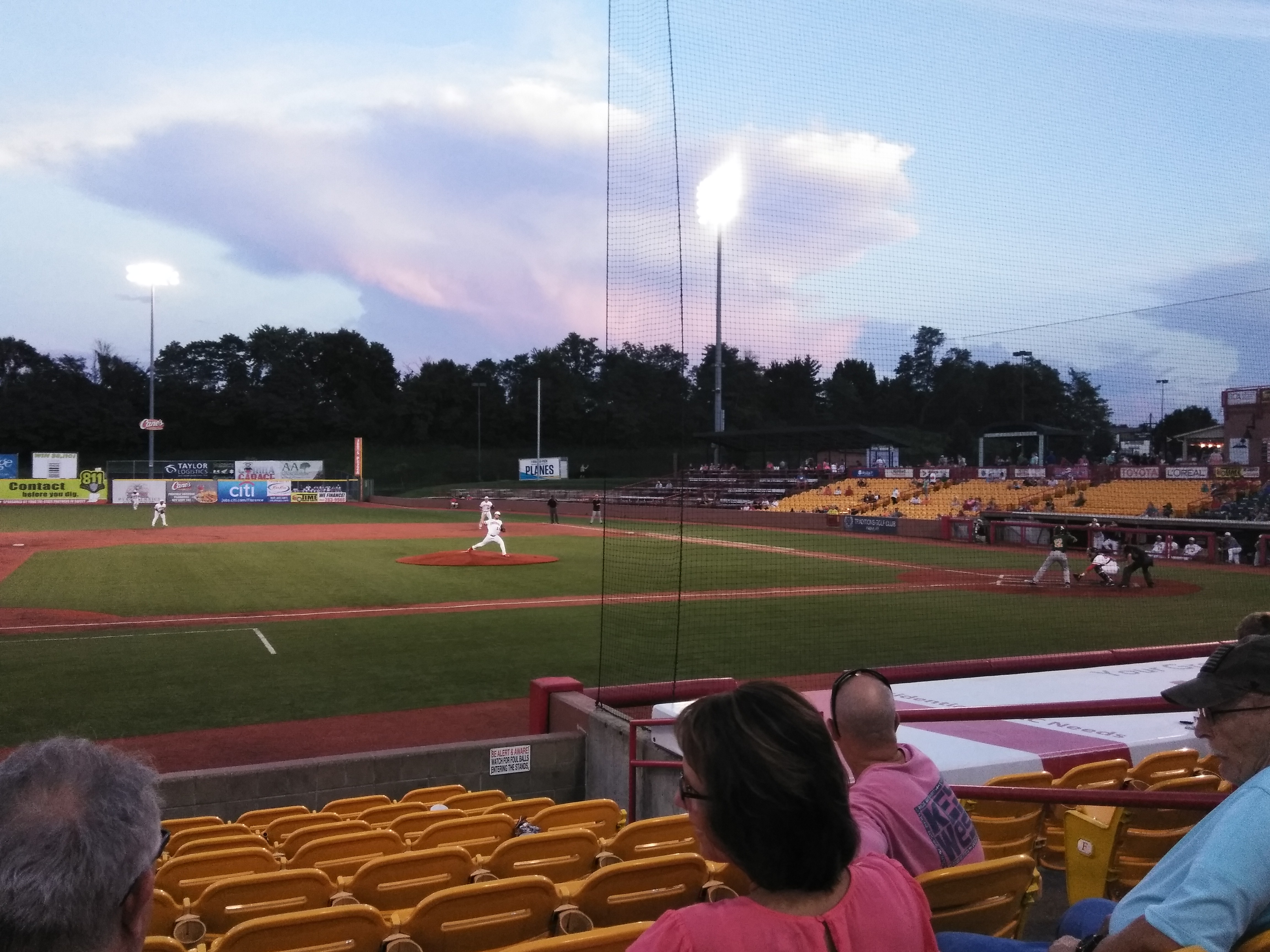 The Florence Freedom split a double header with the Normal CornBelters. (The Winning Run/ DJ)
The Florence Freedom split a double header with the Normal CornBelters. (The Winning Run/ DJ)
My wife and I took another three week summer road trip. While it did not involve as much baseball as our honeymoon did last year, we still visited several important places in the baseball world. The first stop on our trip was in Kansas City. Visiting the Negro Leagues Baseball Museum was my top destination while planning the trip. Saying it exceeded my wildest expectations is an understatement. As wonderful and well done as the Hall of Fame is, Jesse and I both agree the Negro Leagues Baseball Museum is better. We understand Cooperstown deals with everything baseball, and the Negro Leagues Baseball Museum focuses on a much smaller portion of baseball. However, something about the museum eclipses the magic of Cooperstown.
Welcome to the Negro League Baseball Museum. (The Winning Run/ DJ)
The greatest players in Negro Leagues history are still playing in Kansas City. (The Winning Run/ DJ)
The jerseys of the Negro League Museum. (The Winning Run/ DJ)
The next day we drove to Omaha. Among our stops there were the current, TD Ameritrade Park, and the historic, Rosenblatt Stadium, homes of the College World Series. Standing where so much baseball history has taken place gave me goosebumps. The drive between the ballparks felt like traveling from new Yankee Stadium to old Yankee Stadium. The new park is fine, but nothing like what it replaced.
The entrance to TD Ameritrade Park, home of the College World Series. (The Winning Run/ DJ)
What is left of Rosenblatt Stadium. (The Winning Run/ DJ)
Our last baseball stop on our road trip was in Fargo, North Dakota. Inside the West Acres Mall is the Roger Maris Museum. While Maris is best remembered for his 1961 season, the Museum, which consists of a video room and long window display, walks you through Maris’ life and career. The simple museum is perfect for the two time MVP who often seemed happier when avoiding the spotlight.
The highlight of my baseball year was the road trip I took with Bernie. Four games, in four days, in four cities. We watched the Lansing Lugnuts, Detroit Tigers, Fort Wayne TinCaps, and South Bend Cubs play. While the Major Leagues are the pinnacle of the sport, Minor League Baseball gives you more for your money. You can sit closer, attend more games, and see future Major Leaguers play today. Beyond the great baseball, such a road trip allows you to explore new cities. Bernie and I ate our way through each city, especially Detroit. We both needed a salad and a workout at the end of the trip.
A beautiful sunset as we watched the Lansing Lugnuts play. (The Winning Run/ DJ)
Bernie caught a plush baseball at our first game on the road trip in Lansing. (The Winning Run/ DJ)
Welcome to Comerica Park, home to the Detroit Tigers (The Winning Run/ DJ
Much closer and we could have suited up for the Fort Wayne TinCaps. (The Winning Run/ DJ)
Our seats for the final game of our road trip as we watched the South Bend Cubs play on Mr. Rogers Day. (The Winning Run/ DJ)
Batting practice home run ball hit by one of the Minnesota Twins. (The Winning Run/ DJ)
View from our seats over the Tigers bullpen in left field. (The Winning RUN/ DJ)
2018 was a wonderful year of baseball for me. I spent far too many hours umpiring, watching, and traveling for baseball. It was an excellent year of exploring the game. I am excited to see what 2019 brings.
DJ

The House That Ruth Built
“Now batting for the New York Yankees, the shortstop, #2, Derek Jeter, #2.”
I can still hear legendary Yankee Public Address Announcer Bob Sheppard introducing Derek Jeter for his first at bat on Sunday, September 21, 2008. Jeter walked to the plate while Sheppard’s voice echoed around Yankee Stadium. Jesse, John, and I had flown to New York solely to watch the Yankees play the Orioles in the final game at Yankee Stadium. The House That Ruth Built was closing.
Baseball brought me to New York City for the first time. I would later live and work in New York for five years, but that first visit was about baseball. Knowing we only had one game to explore one of the greatest ballparks in baseball we arrived at 161st Street Station in the Bronx around 9:30 am, 11 hours before first pitch. We were greeted by a sea of fans who, like us, we eager to spend the day inside the House That Ruth Built before it closed.
We made it to The House That Ruth Built. (The Winning Run/ JJ)
The crowd outside the Stadium was chaotic, joyous, and a bit solemn all at once. The new Yankee Stadium stood just across the street, and except for a few glances I had little interest in the building. I had come to see THE Stadium, not its replacement. After slowly making our way through the line we finally entered the hallowed stadium. We soon learned our first stop would not happen. Monument Park was at capacity and the Yankees were closing it early. We scrapped our other plans and began exploring every nooks and cranny of the stadium that was accessible. We walked around the cheap seats, the foul lines, behind home plate, everywhere but our seats. Our seats were in the right field bleachers, with the Bleacher Creatures. Once you entered the bleacher area, security would not permit you to return to the rest of the stadium. We explored until our feet ached from the concrete. Once you join the Bleacher Creatures, there is no coming back.
Our first glimpse of the field was from behind home plate. Seeing the most famous baseball field in the world, where so much of the game’s history was made, where so many legends played, felt spiritual. I remember silently standing with Jesse and John gazing at the field, soaking it in. Three baseball fanatics in awe of their surroundings.
The field is beautiful from the cheap seats (The Winning Run/JJ)
Warming up before the game. (The Winning Run/JJ)
Breathtaking. (The Winning Run/JJ)
Our day touring Yankee Stadium went by in a flash before we joined the Bleacher Creatures. The pregame festivities included Yankee legends returning to the field one last time. Yogi Berra, Whitey Ford, Reggie Jackson, and other living legends were joined by the ghosts of Babe Ruth, Lou Gehrig, Joe DiMaggio, Mickey Mantle, among others. Fittingly Babe Ruth’s daughter, Julia Ruth Stevens, threw out the final first pitch in the House That Ruth Built.
Once the actual game began, it was like every Yankee game I would attend while living in New York. The nationally televised game between two teams who would finish the season a combined 36.5 games behind first place began at 8:36 p.m. There were plenty of people, like us, who were not the regulars among the Bleacher Creatures. It was easy to identify the Bleacher Creatures. They are loud, obnoxious, generally know their baseball, and above all are die hard Yankee fans. The chants began in the top of the first, roll call. Every Yankee, except the pitcher and catcher, had their name chanted until they acknowledged the Bleacher Creatures. Some players, like Bobby Abreu, waved quickly, others, like Johnny Damon, made us work for a few minutes before waving. The loudest chant was for the Captain, Derek Jeter. Jeter was the man; no one on the field commanded more respect than #2.
Our seats with the Bleacher Creatures. (The Winning Run/JJ)
I remember only pieces of the actual game. We went to the game for the experience, not necessarily the actual game. The Bleacher Creatures did what they do best, being loud. I have clear memories of a chant regarding Hall of Fame player and then ESPN Sunday Night Baseball announcer Joe Morgan, who was broadcasting the game. The chant was simple, “Joe Morgan Sucks! Joe Morgan Sucks! Joe Morgan Sucks!” Over and over and over. I was never a fan of Morgan’s broadcasting, but the Bleacher Creatures were less bashful in voicing their opinion. Another memory is a different chant “Box Seats Suck! Box Seats Suck!” The metal bleachers in right field were anything but leisurious. They reminded me of the bench at a little league game. The most memorable moment sitting among the Bleacher Creatures happened when people sitting several rows in front of us attempting to start the wave. Yes the wave. Every time they tried to start the wave they were booed and told to “Take That Sh@$ Back To Shea!” Eventually stadium security and the New York Police Department stepped in. This was late in the game after beer could lower people’s inhibitions. Obviously the people threatening those trying to start the wave were removed by security. Wrong. Attempting to start the wave gets you removed to the cheers of the Bleacher Creatures. I might have missed something someone said or did, but I like to think they were arrested for attempting to start the wave at Yankee Stadium.
On the field, Jose Molina hit the final home run in Yankee Stadium with a fourth inning two run shot off Chris Waters to give the Yankees a 5-3 lead. The Yankees would stretch out their lead in the sixth inning with a Jason Giambi RBI single and a sacrifice fly by Robinson Cano to score Brett Gardner. The tension was palpable in an otherwise meaningless game. Everyone wanted one last Yankee victory inside the House That Ruth Built. The Yankees led 7-3 heading into the ninth inning.
The guitar riff blasted through the speakers. Metallica’s Enter Sandman filled the stadium. The greatest closer of all time was trotting in from the bullpen. 11 pitches and three groundouts later, Mariano Rivera closed Yankee Stadium.
Mariano Rivera coming in to close out Yankee Stadium. (The Winning Run/JJ)
The final out. (The Winning Run/JJ)
Jesse and me after the game. (The Winning Run/JJ)
John and me after the game. Note the mounted police on the field to keep people off.(The Winning Run/JJ)
The celebration was not the World Series many envisioned to close Yankee Stadium, it was still special. Derek Jeter spoke to the crowd, thanking the fans and creating a bridge between the two stadiums. He was brief and to the point before leading the Yankees around the field to say goodbye. Yankee Stadium was the House That Ruth Built and the House That Jeter Closed.
The game ended just before midnight. An era in baseball history was closed. No one wanted to leave. Grown men were tossing empty water bottles to the player’s kids on the warning track, begging them to fill the bottles with dirt before tossing them back. Every nook and cranny inside Yankee Stadium was filled with memories and the thought of never coming back was almost too much for some to bear. Normally at the end of a Major League game the ushers and security are quick to push you out of your seats. This was different, we stayed in our seats for an hour after the final out. The crowd was slow to disperse and the stadium staff did not have the usual urgency to clear the stadium. It was after 1 a.m. when we left Yankee Stadium. No one was in a hurry to leave the ghosts of baseball history alone in a now closed Yankee Stadium.
DJ



